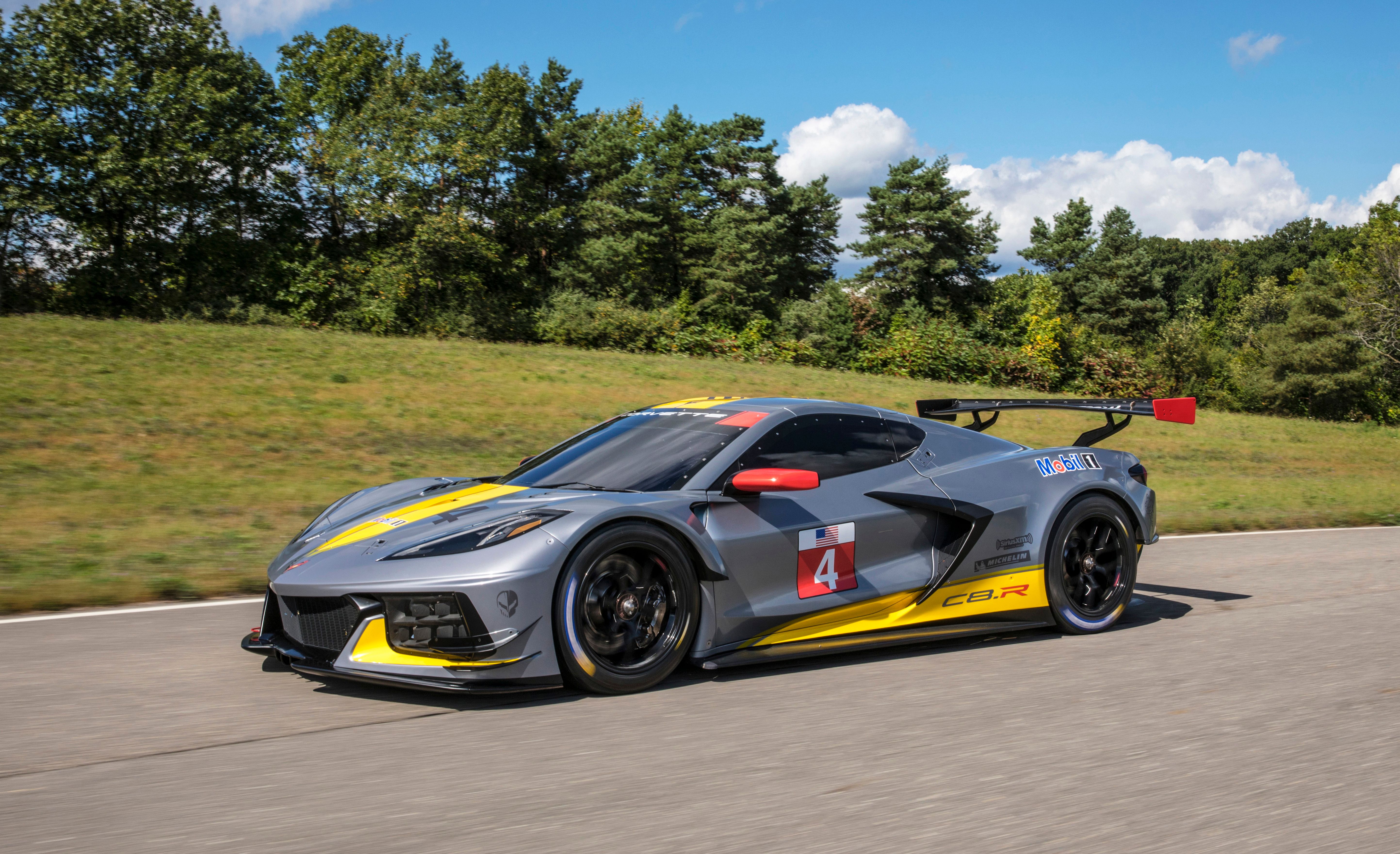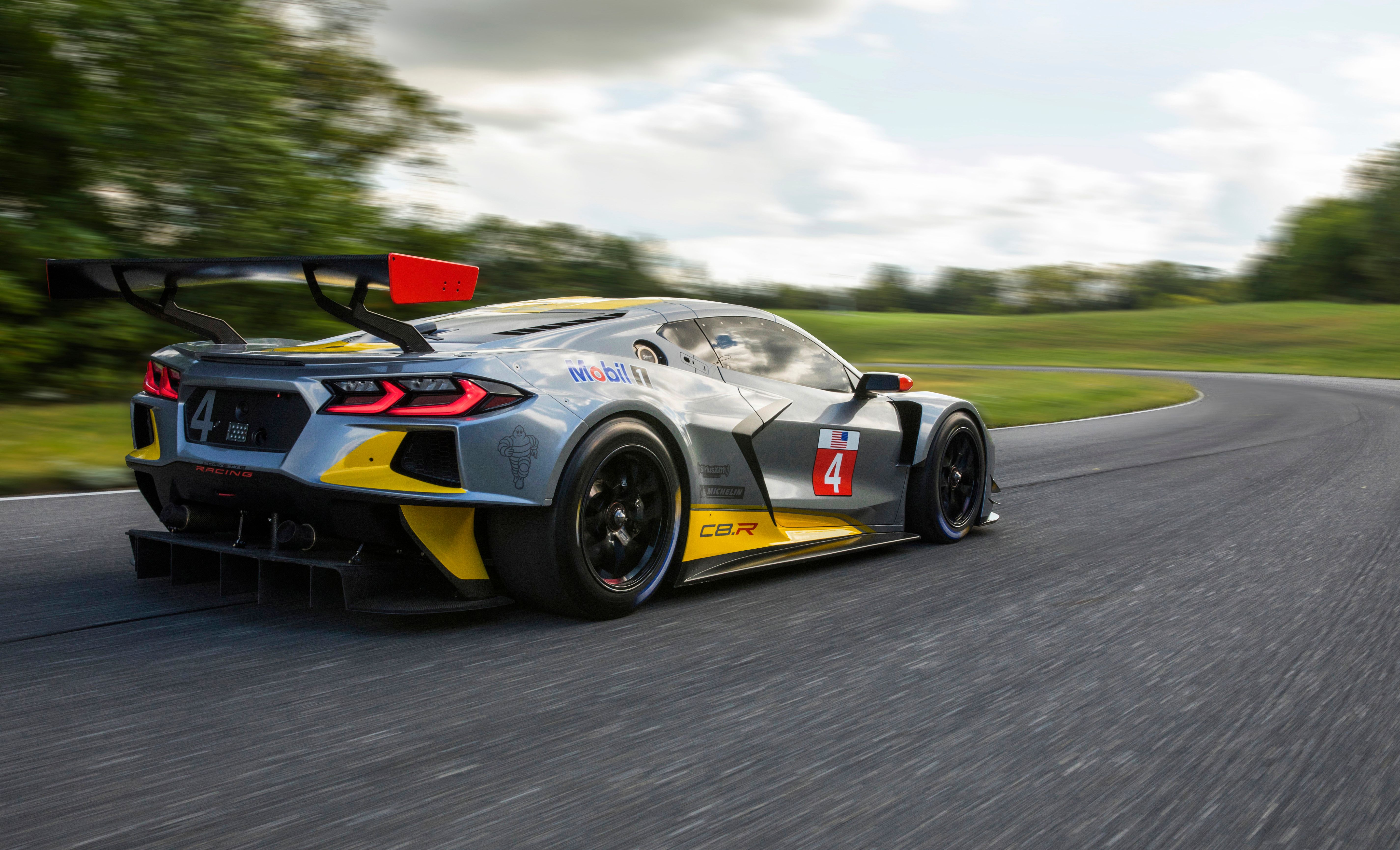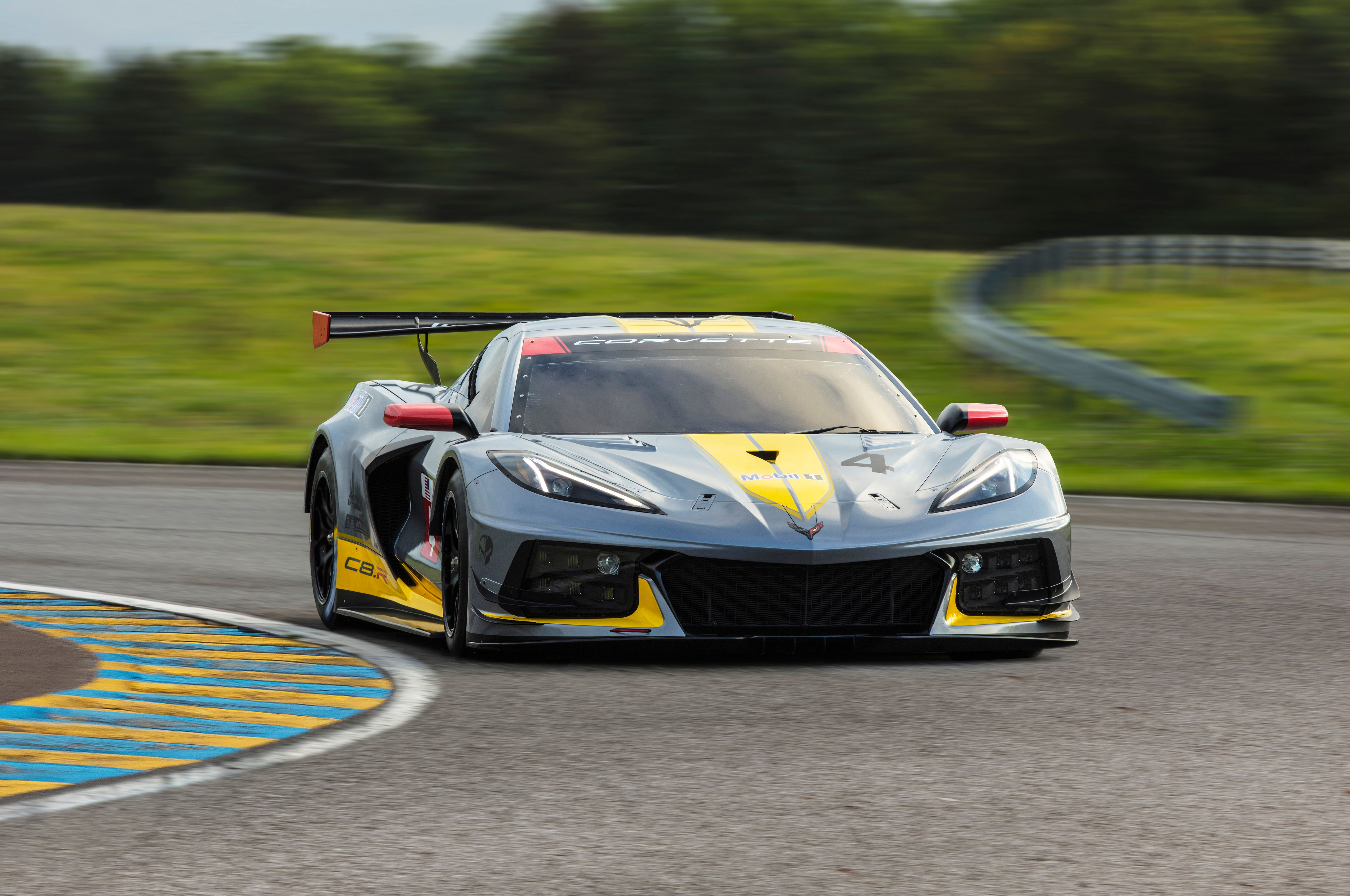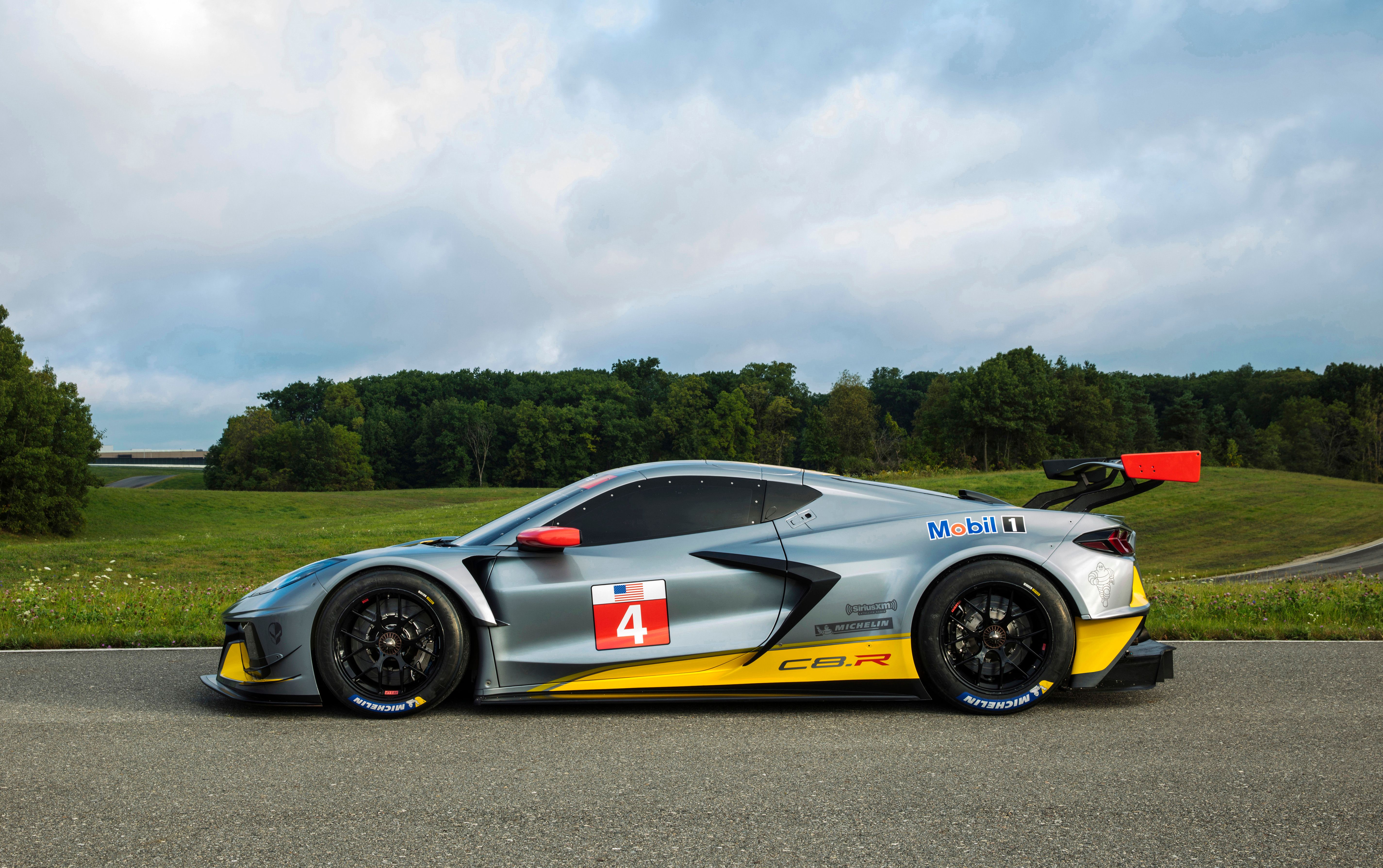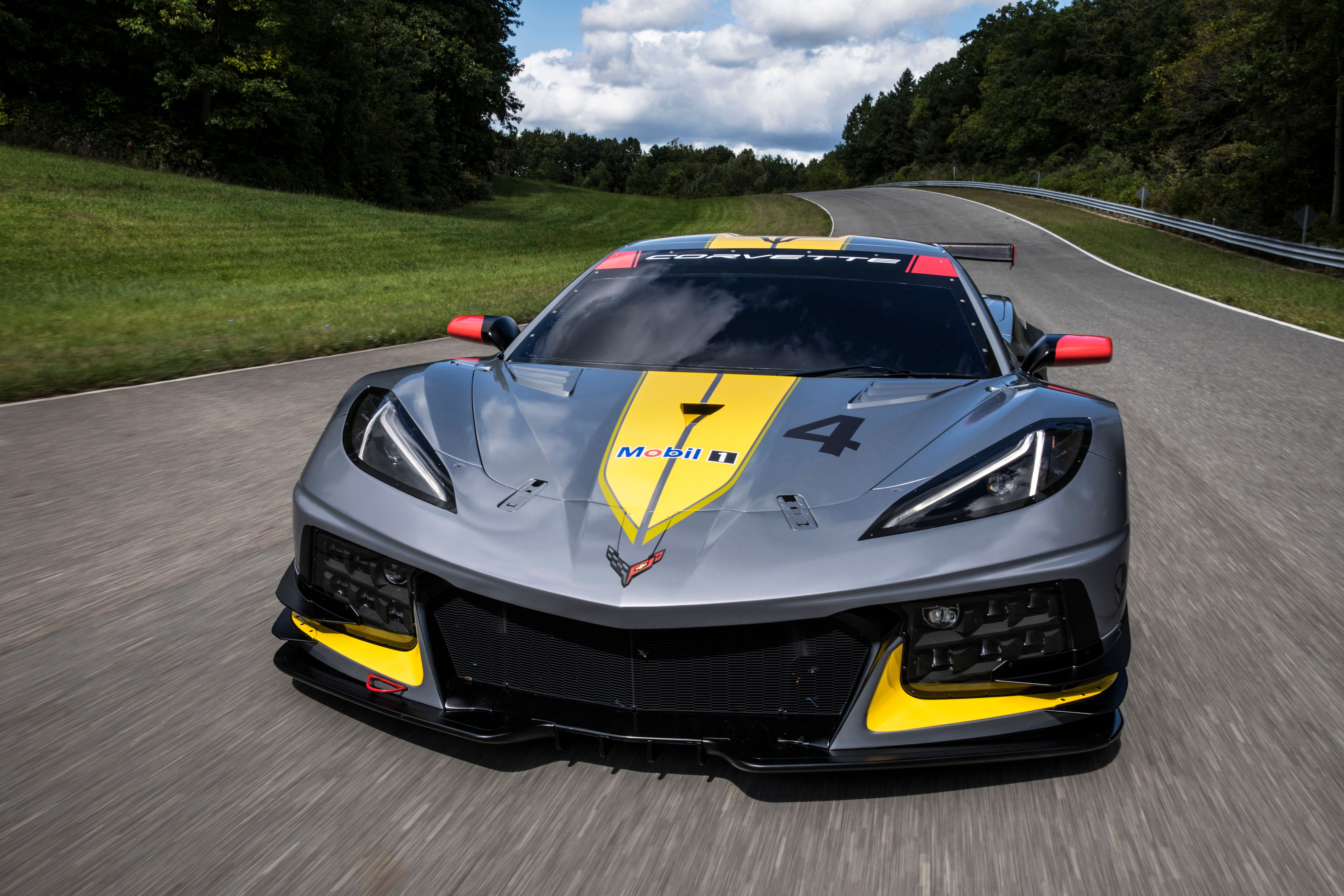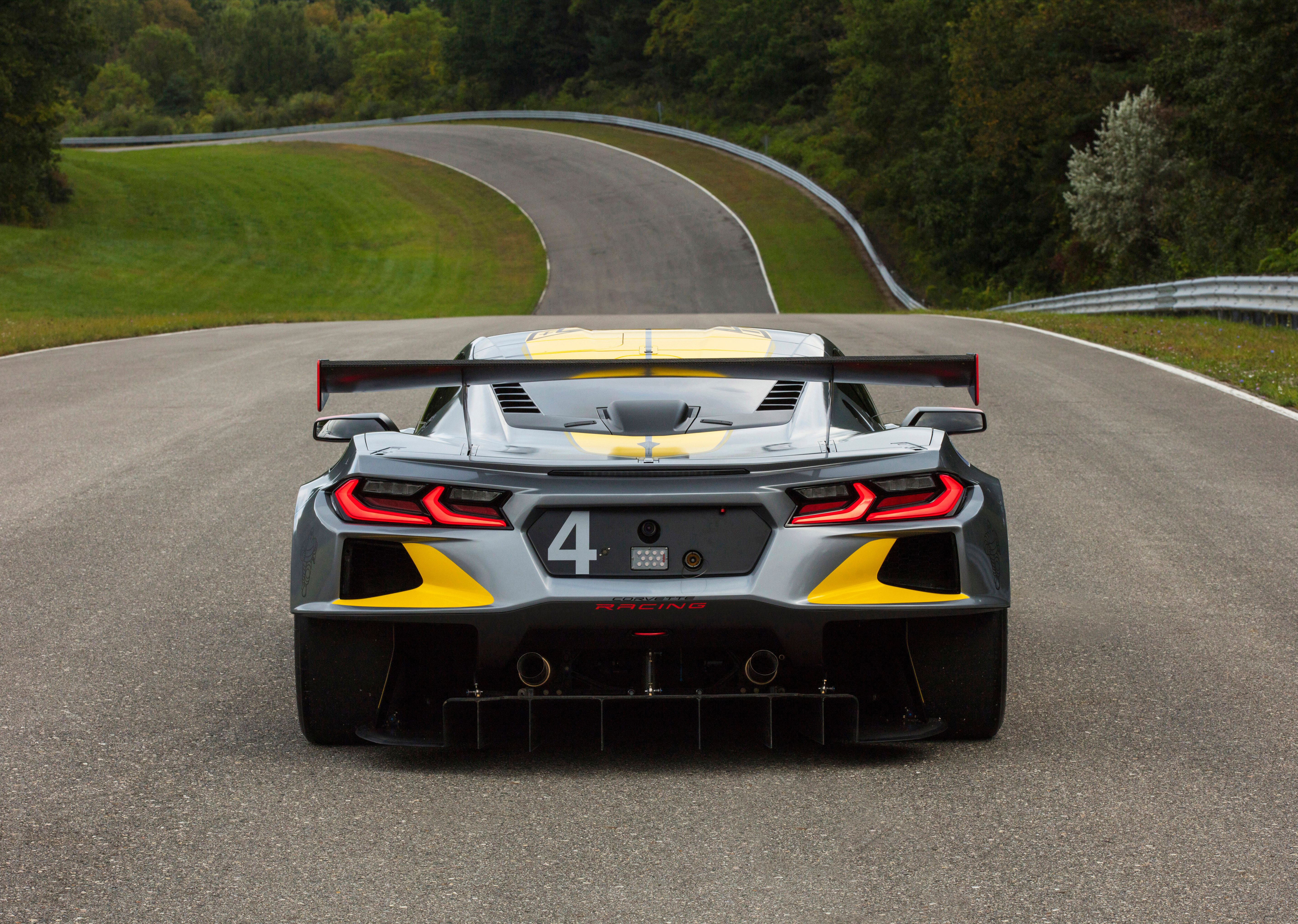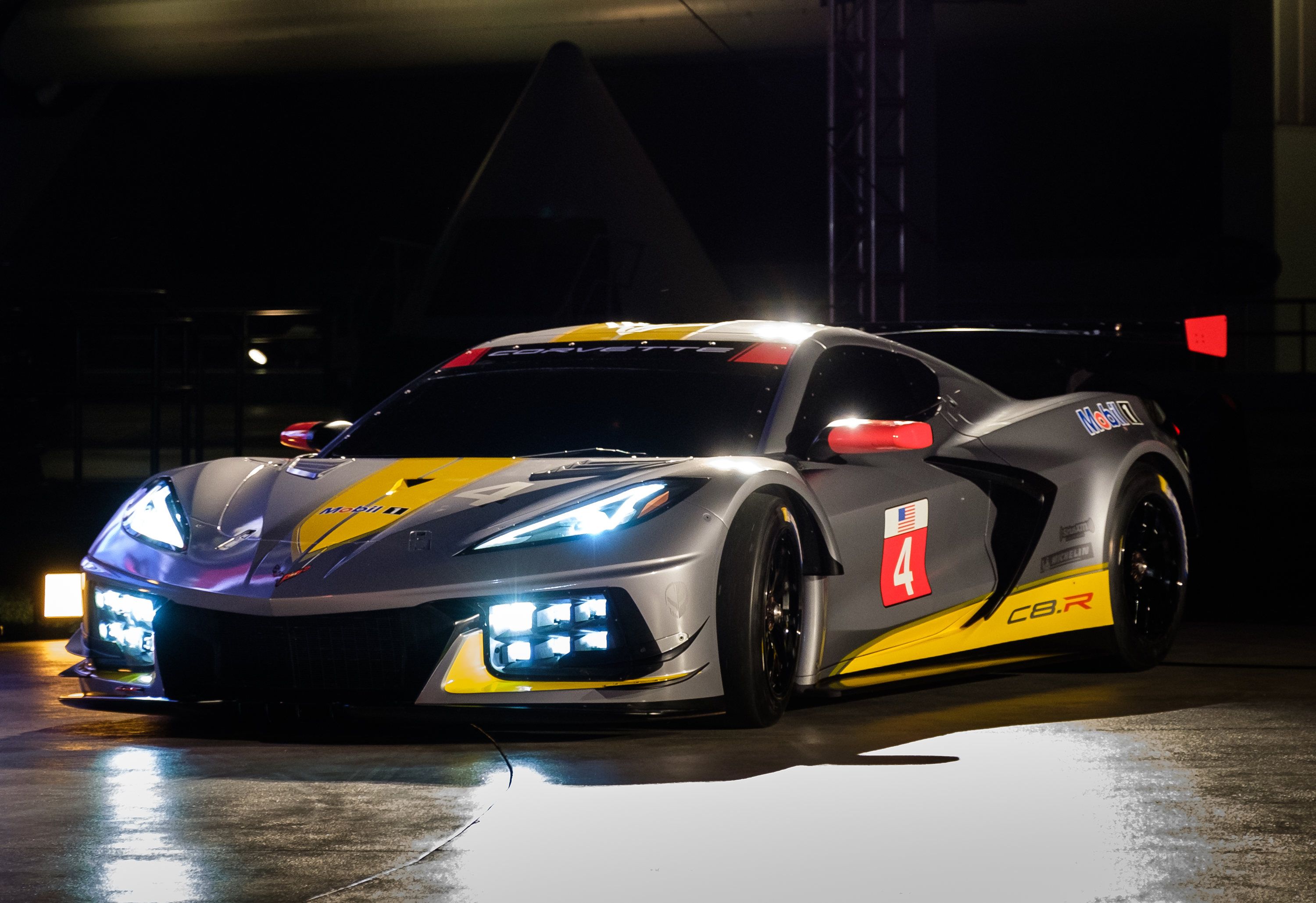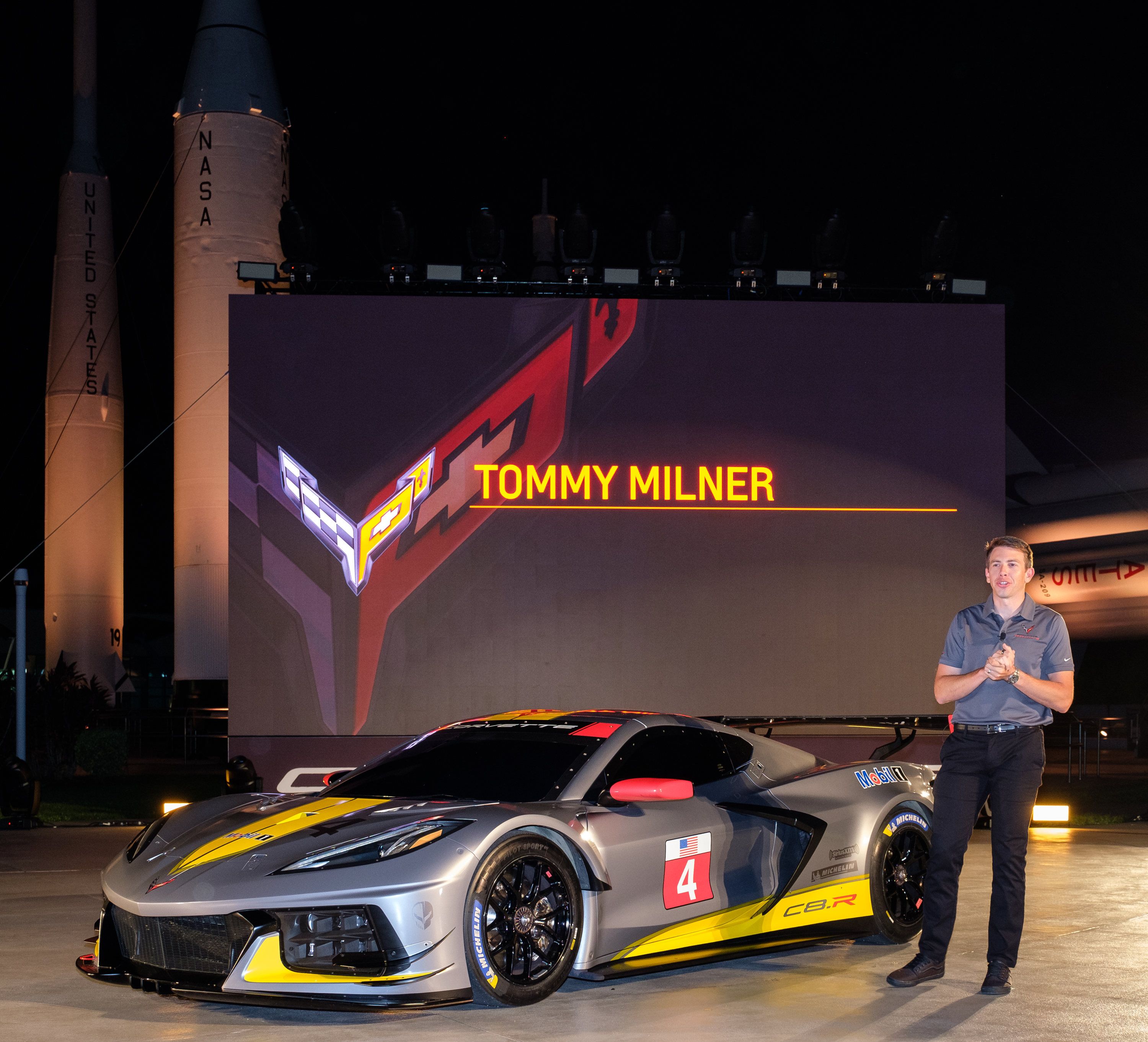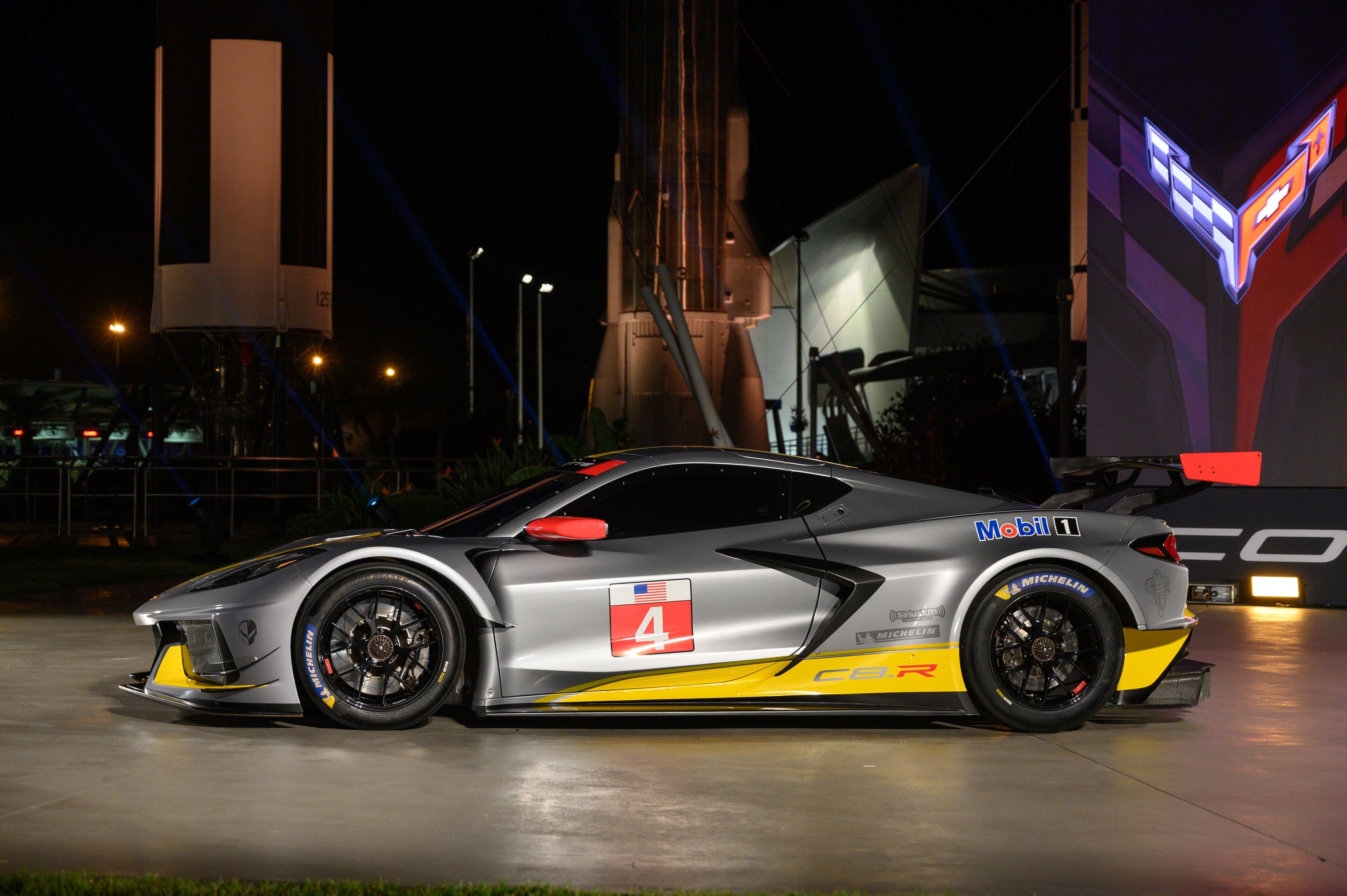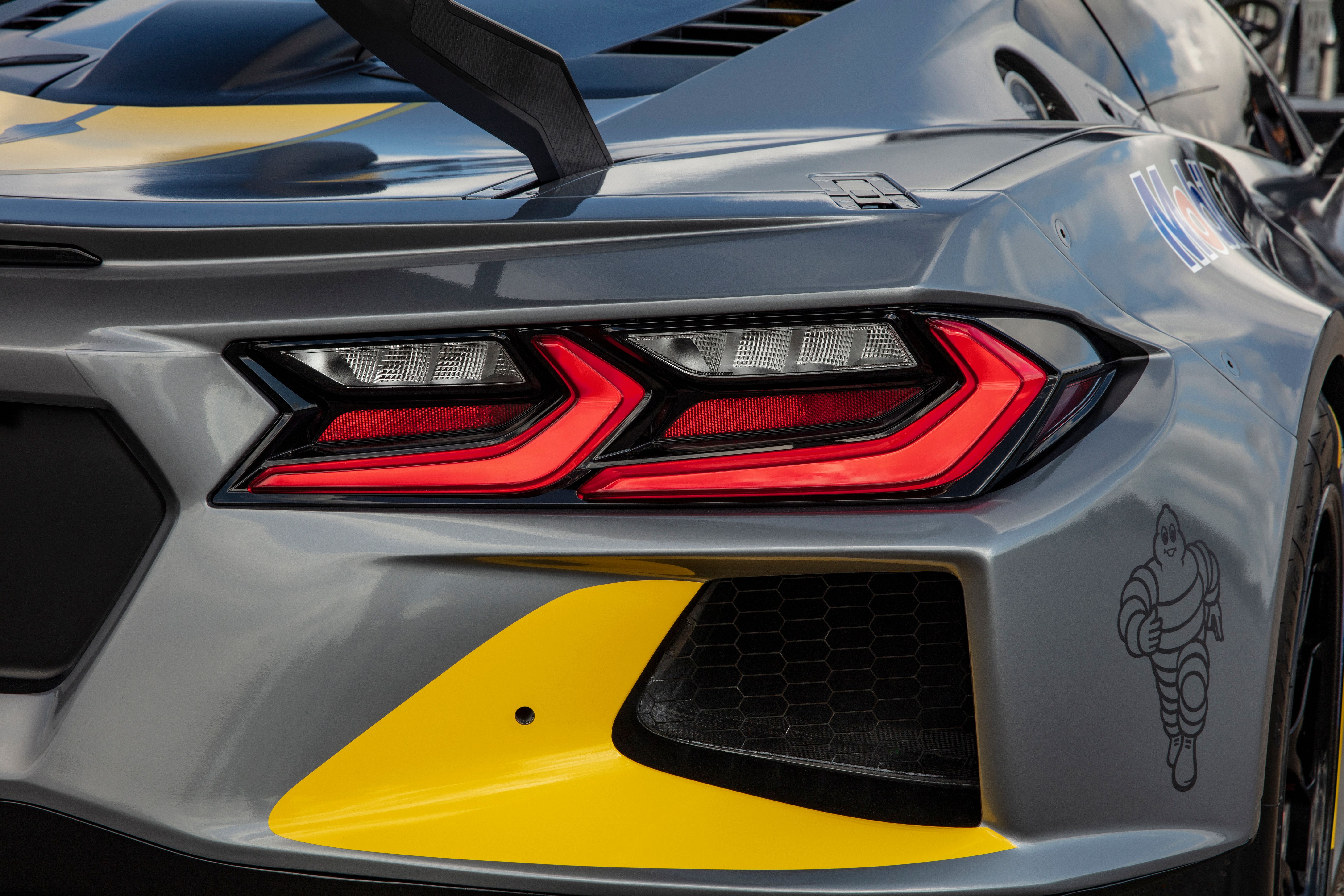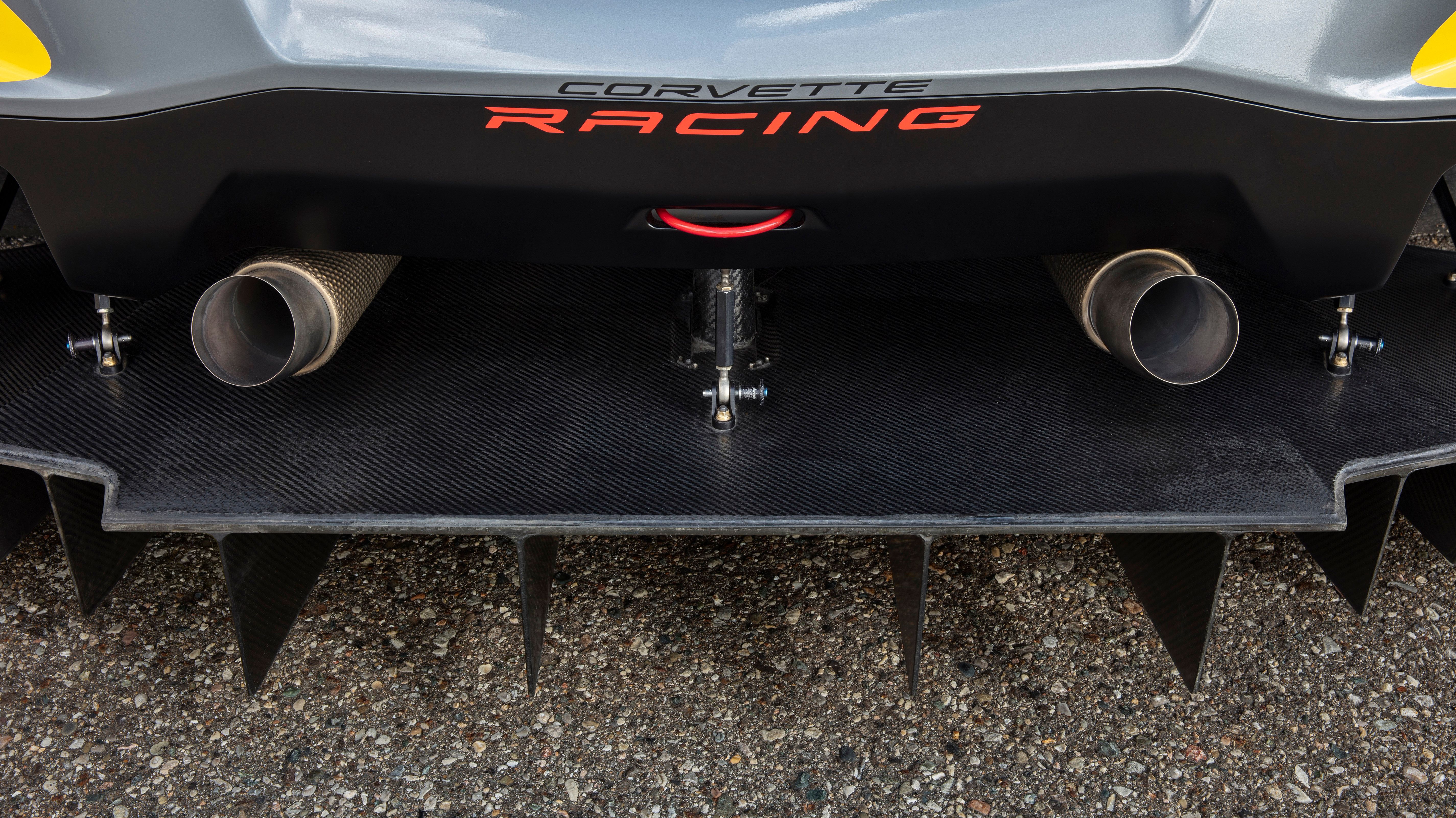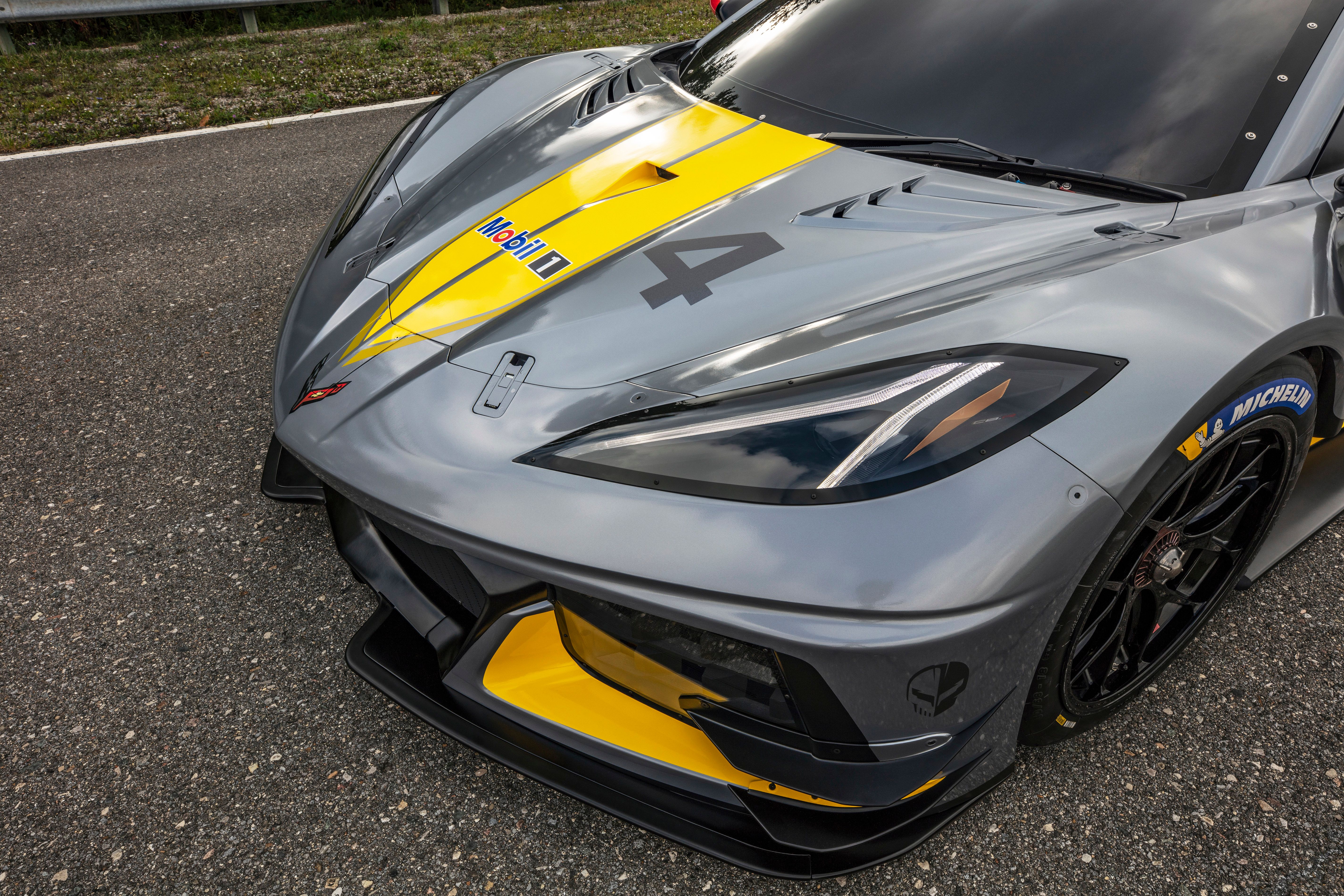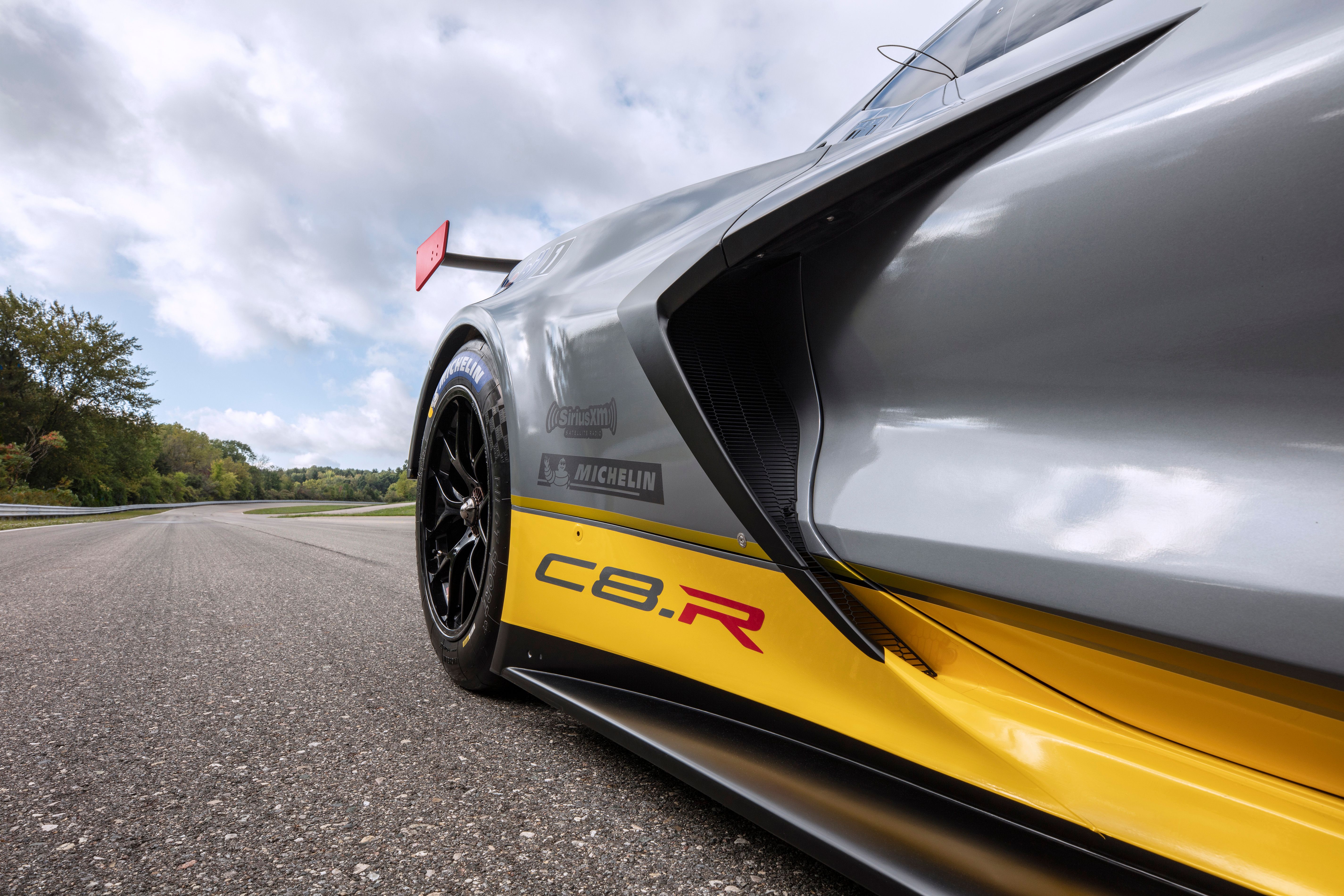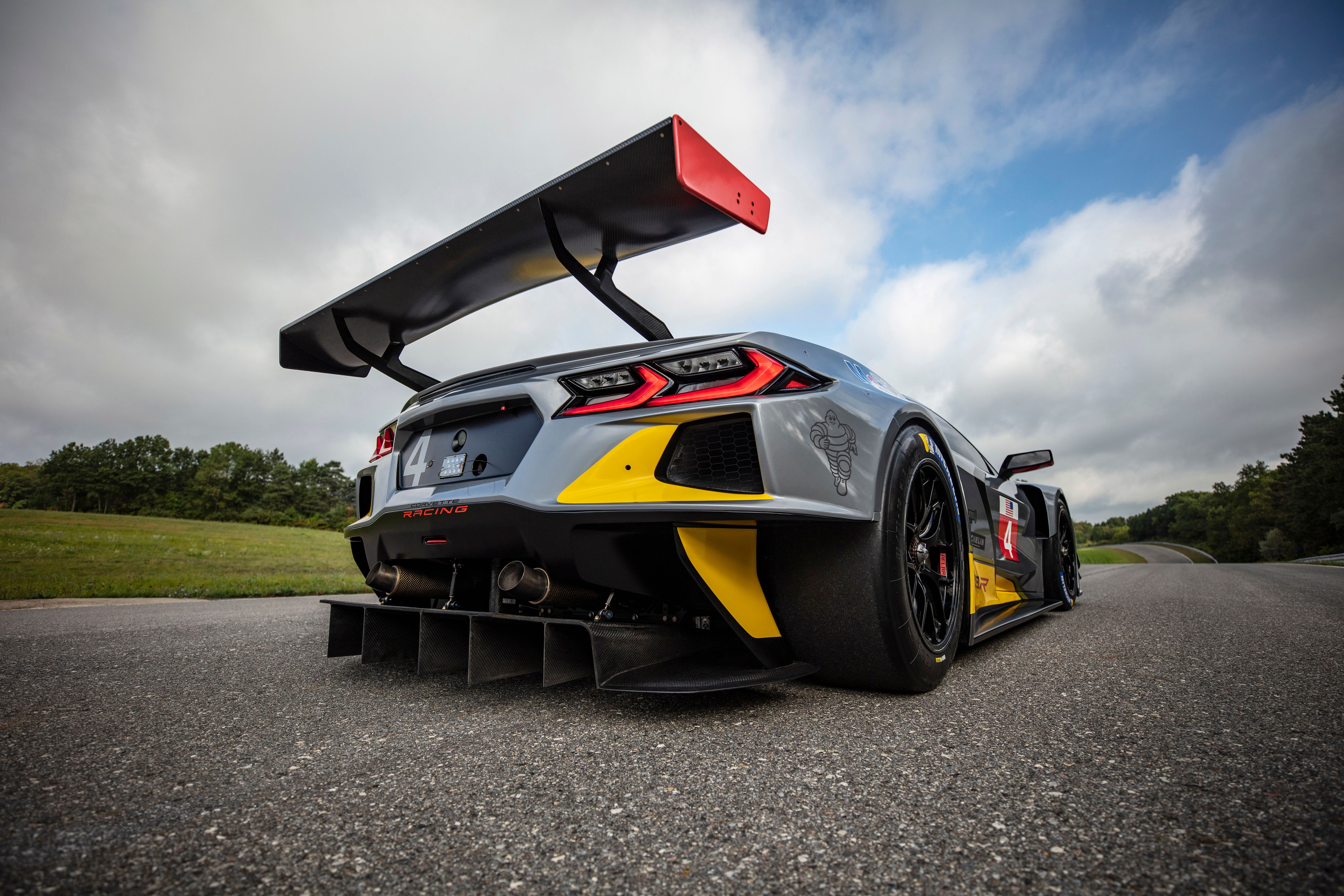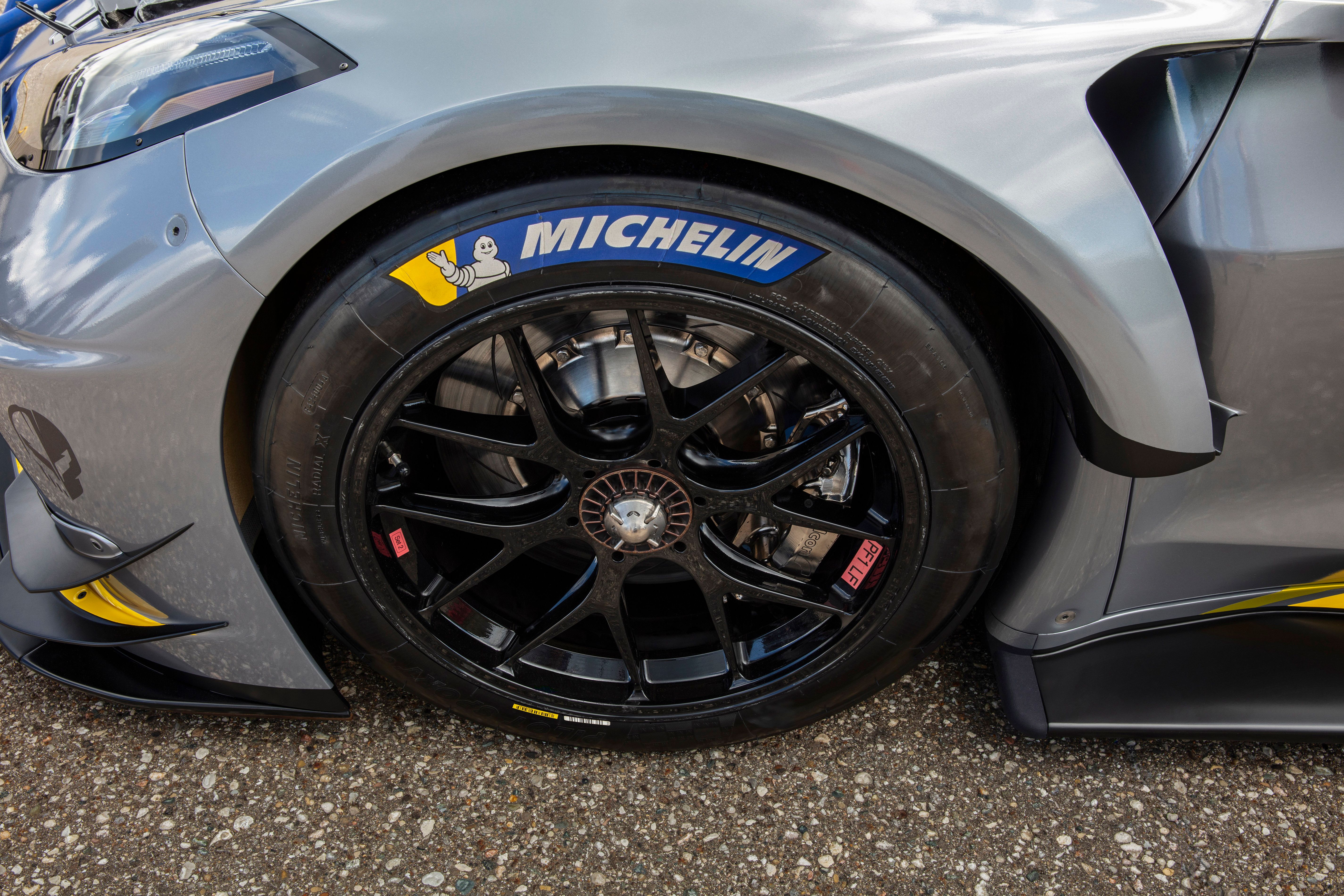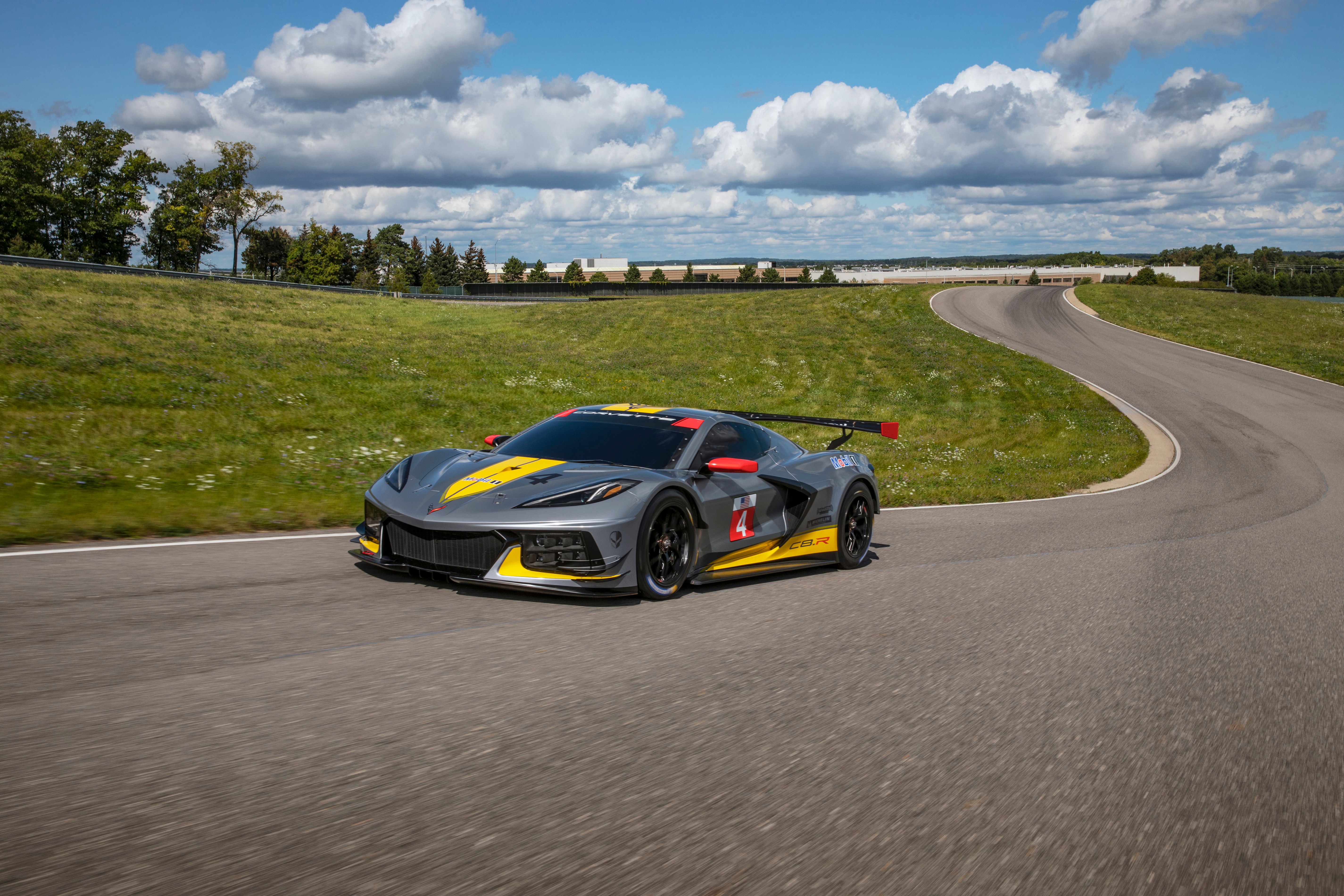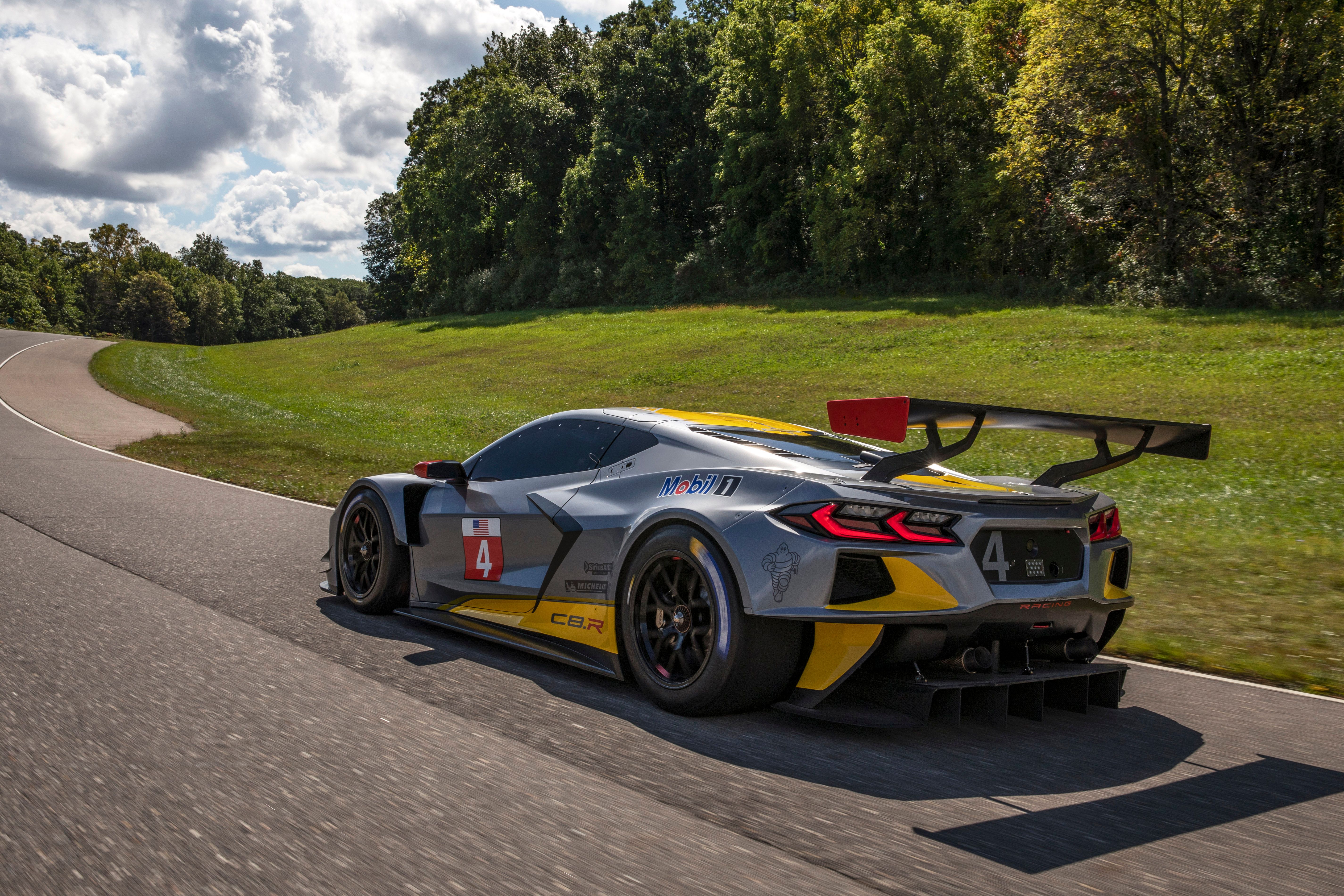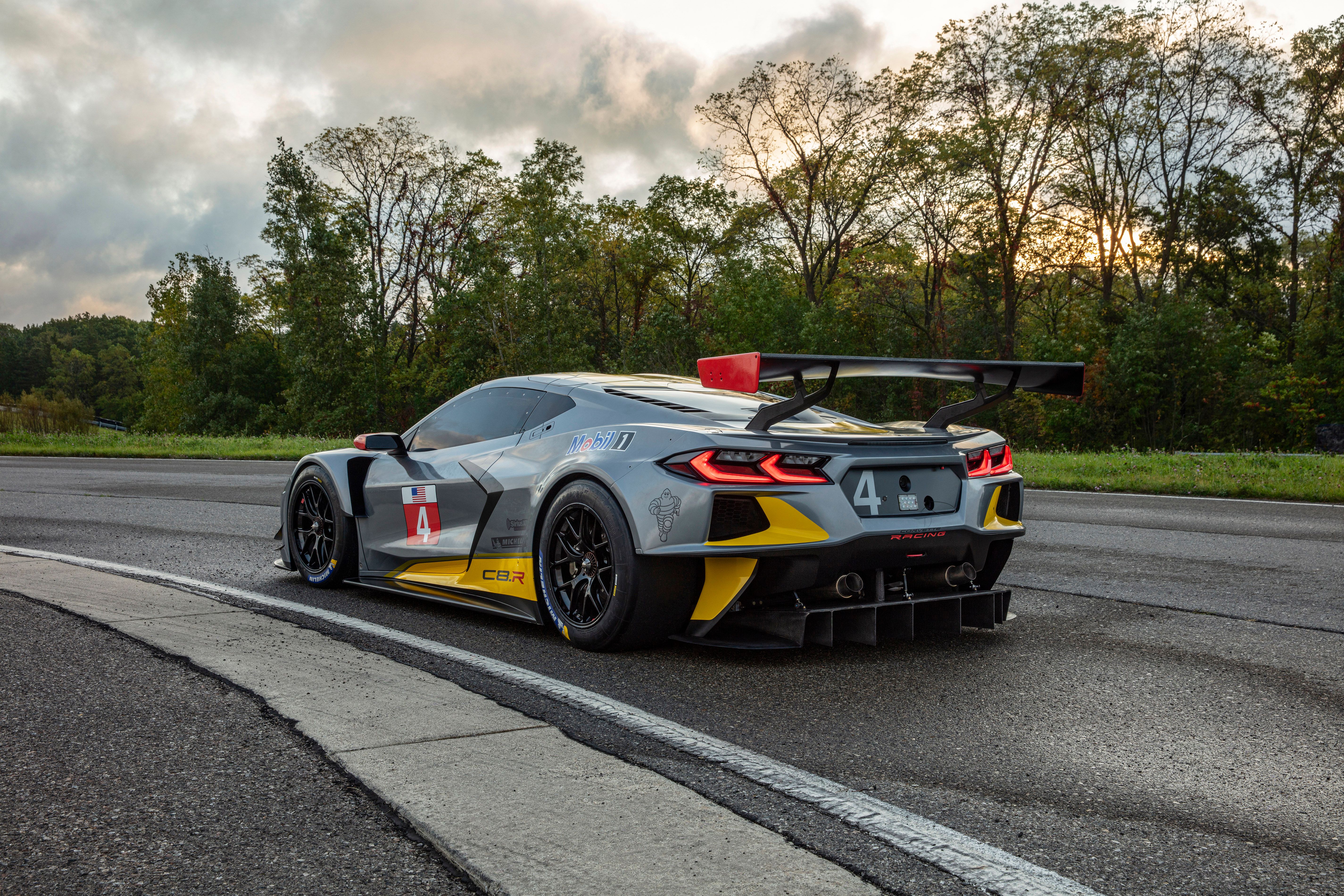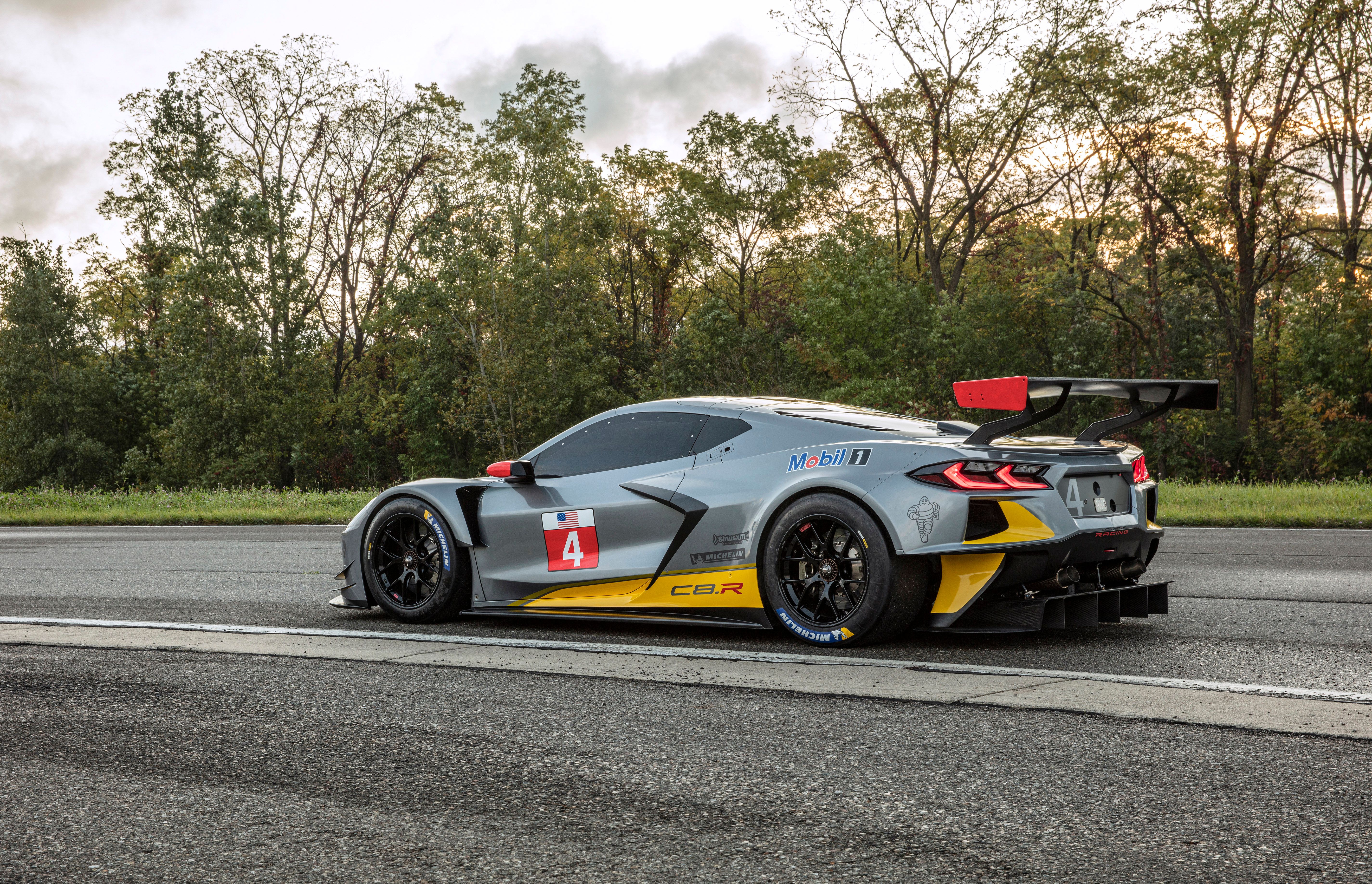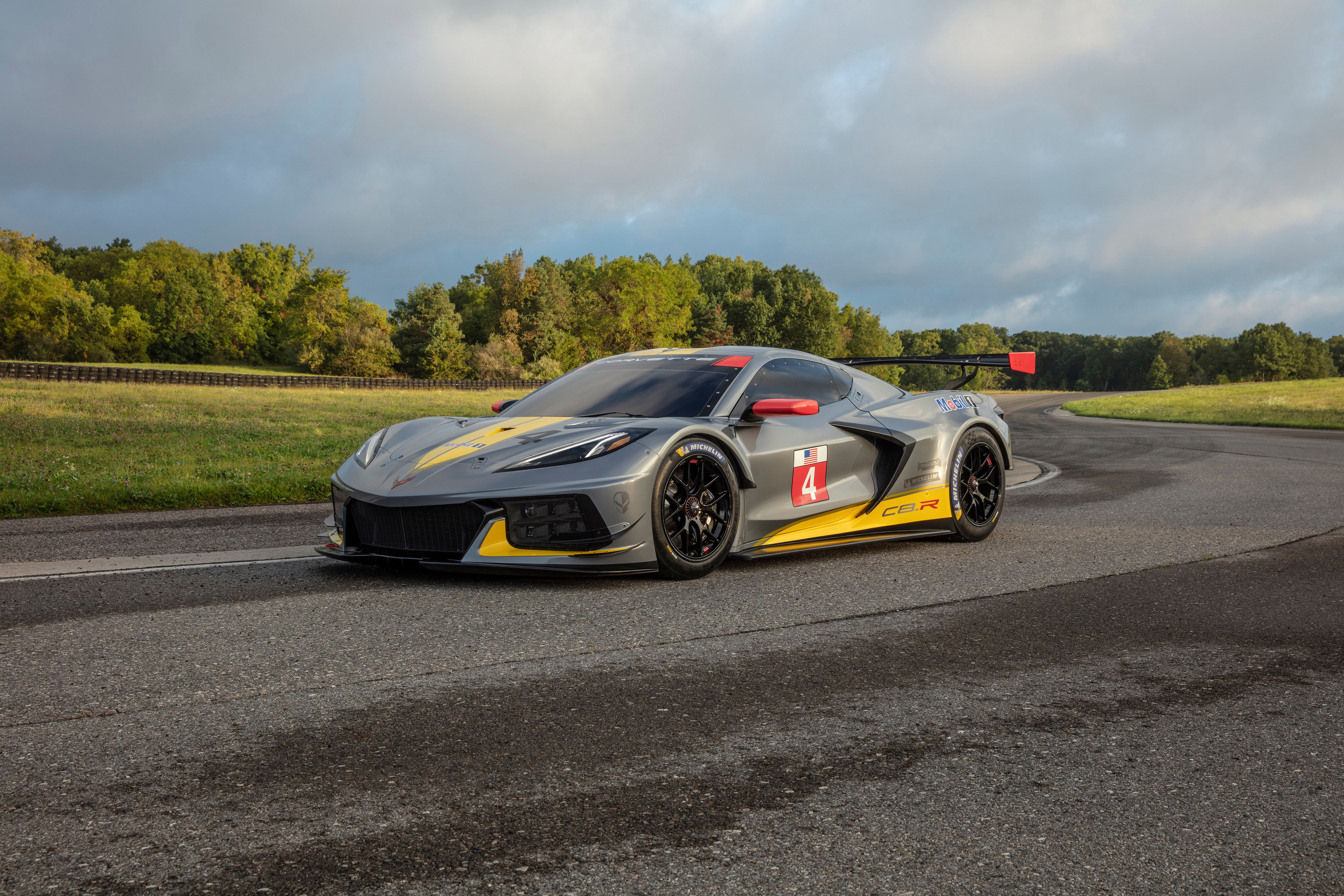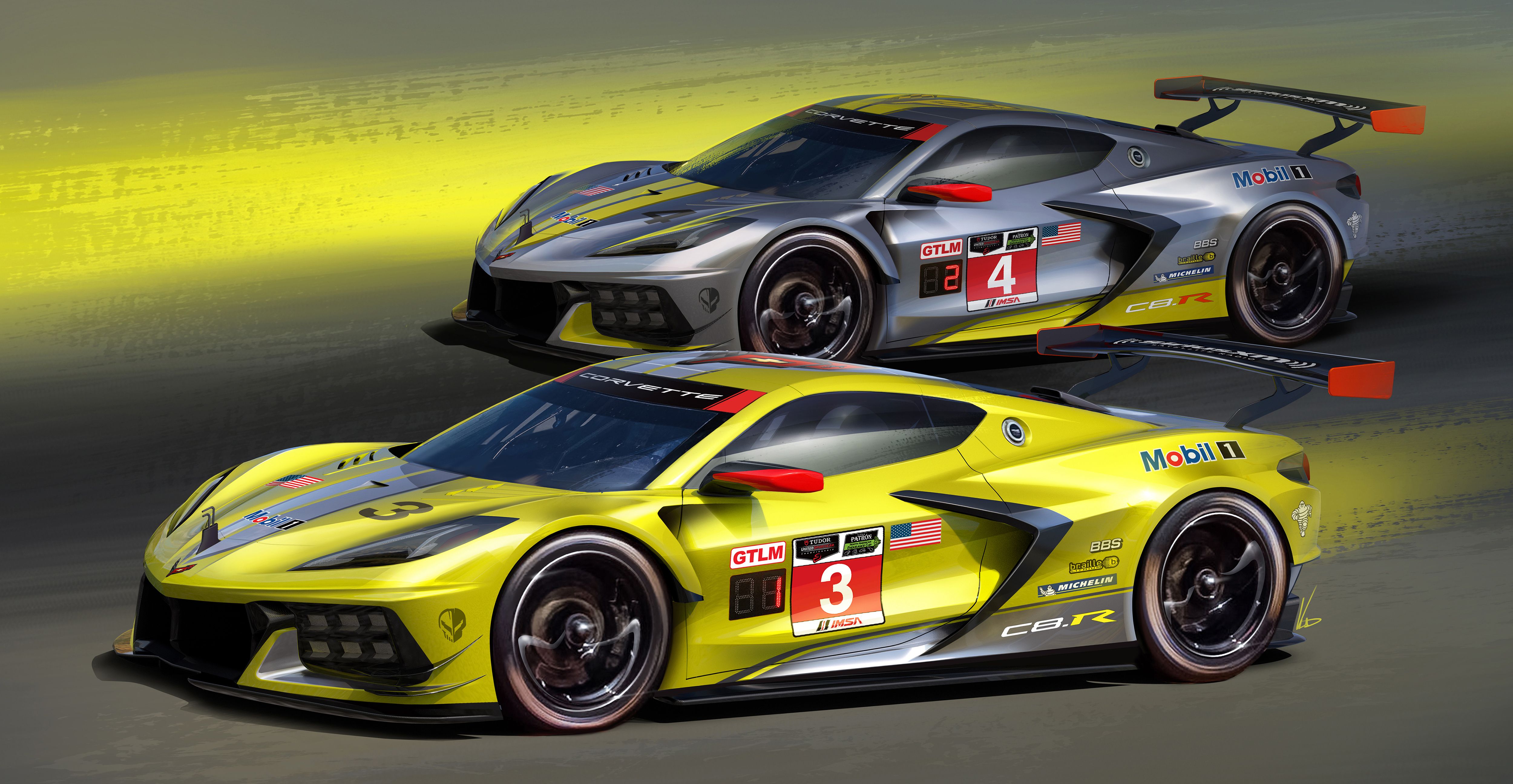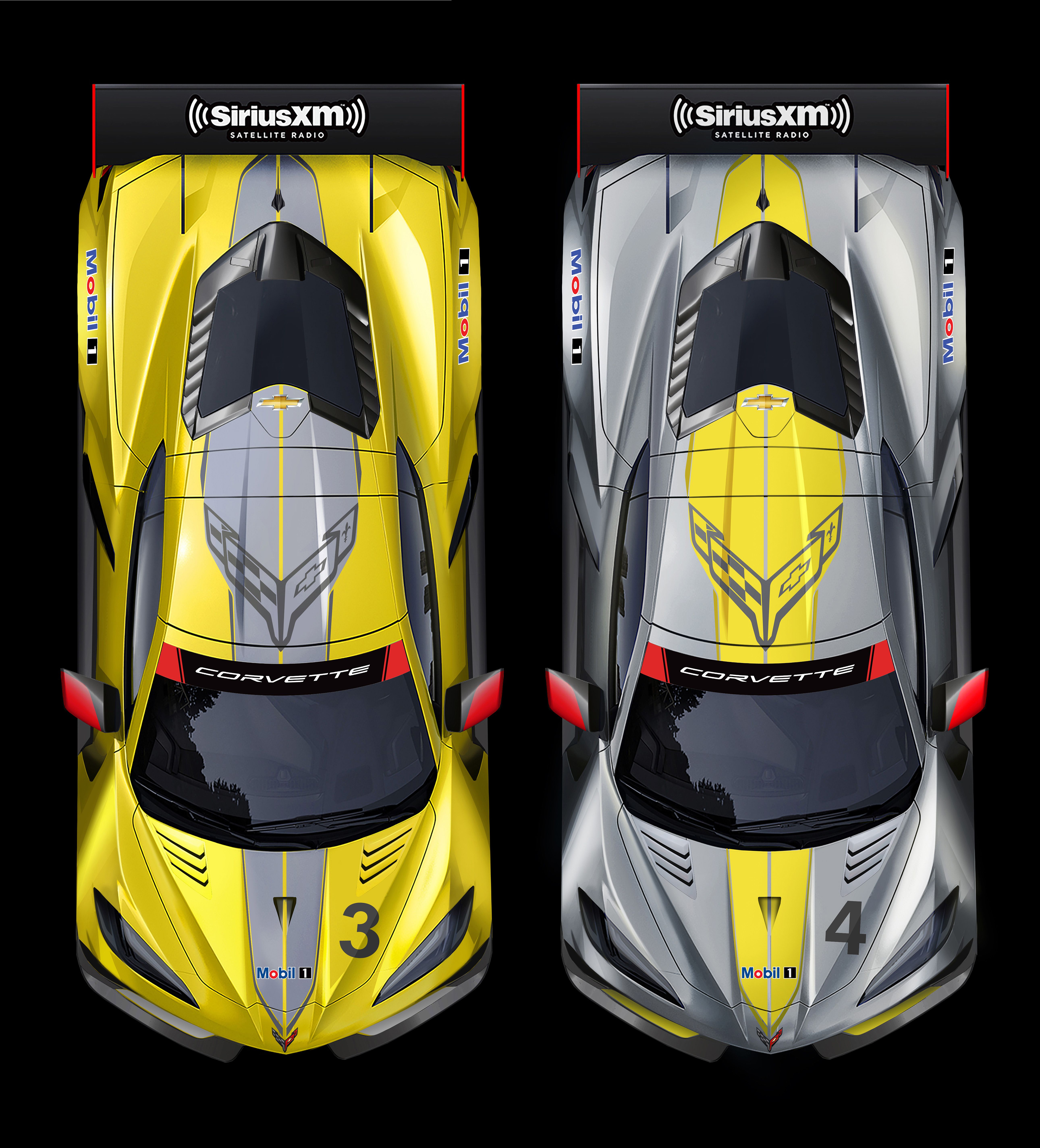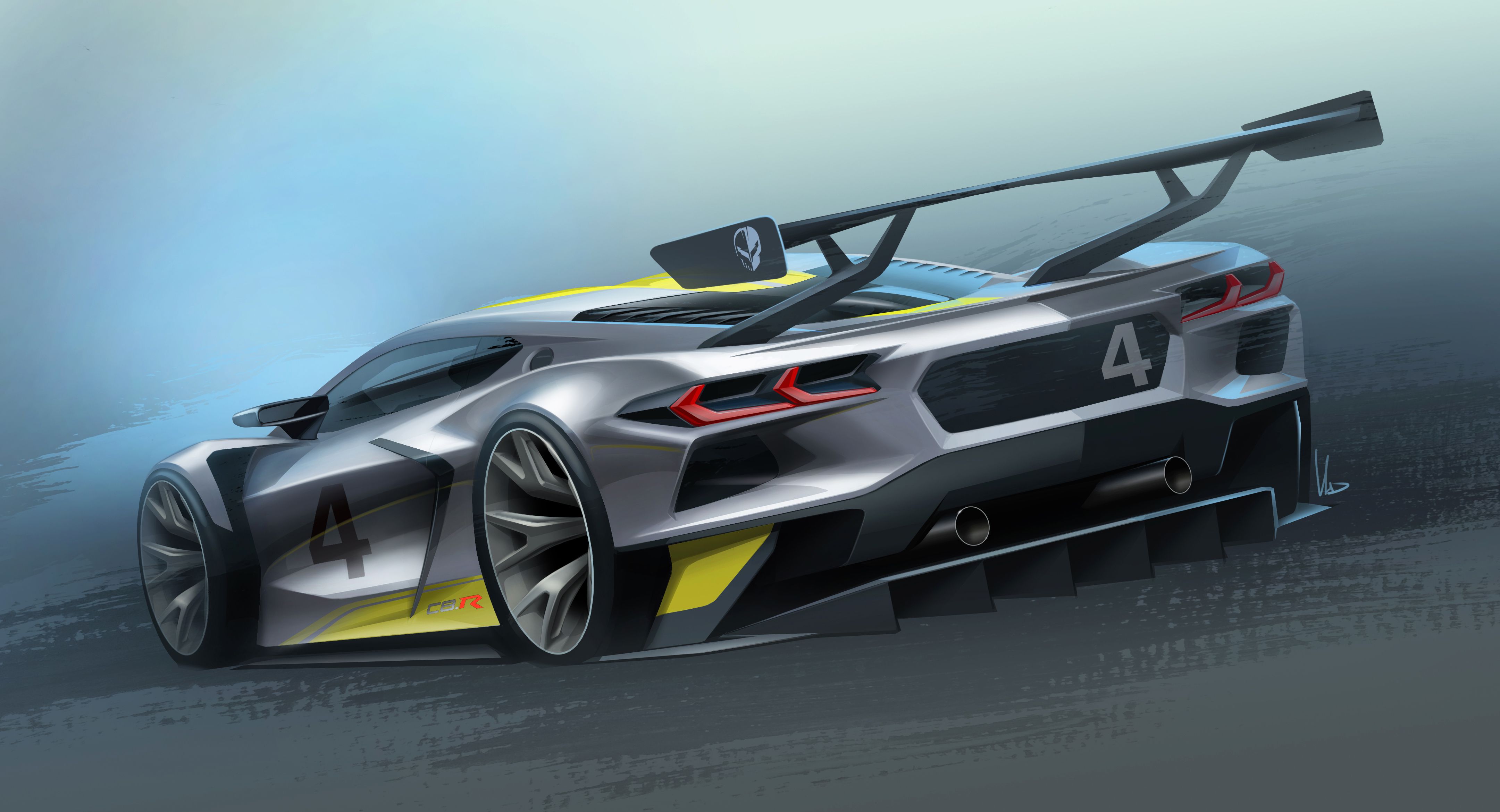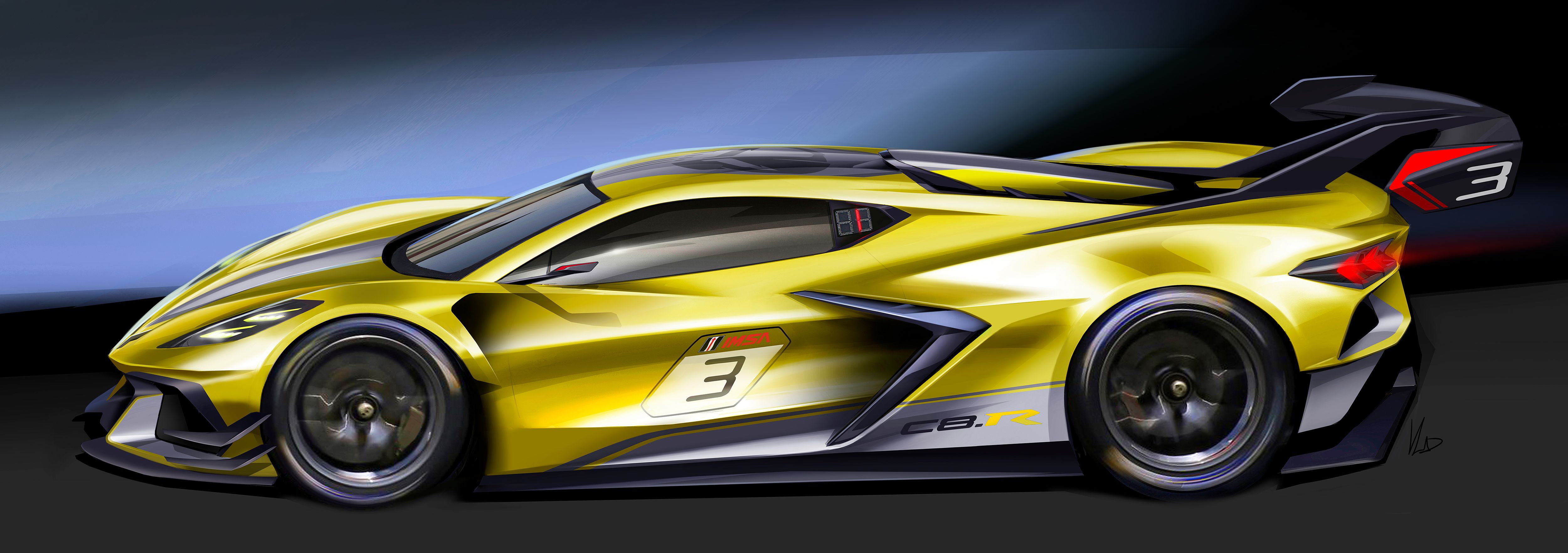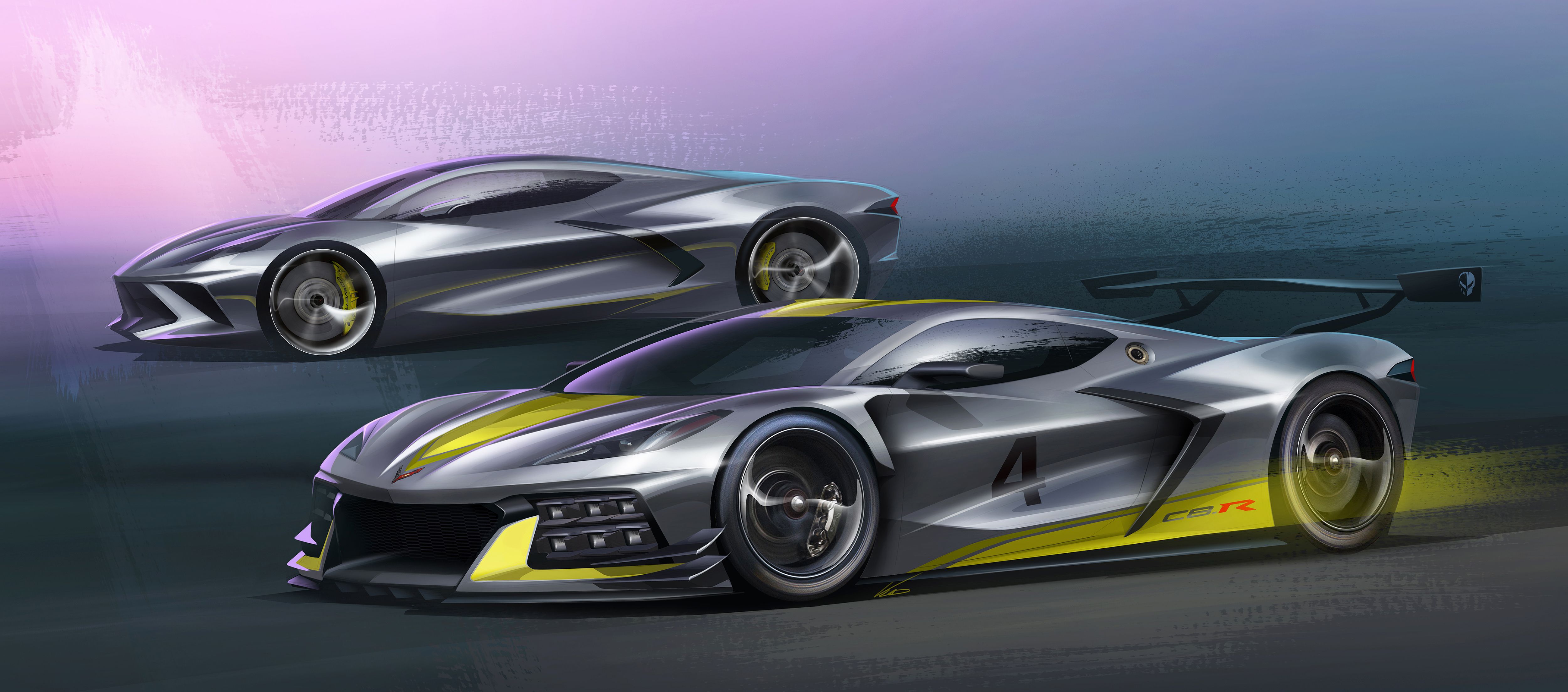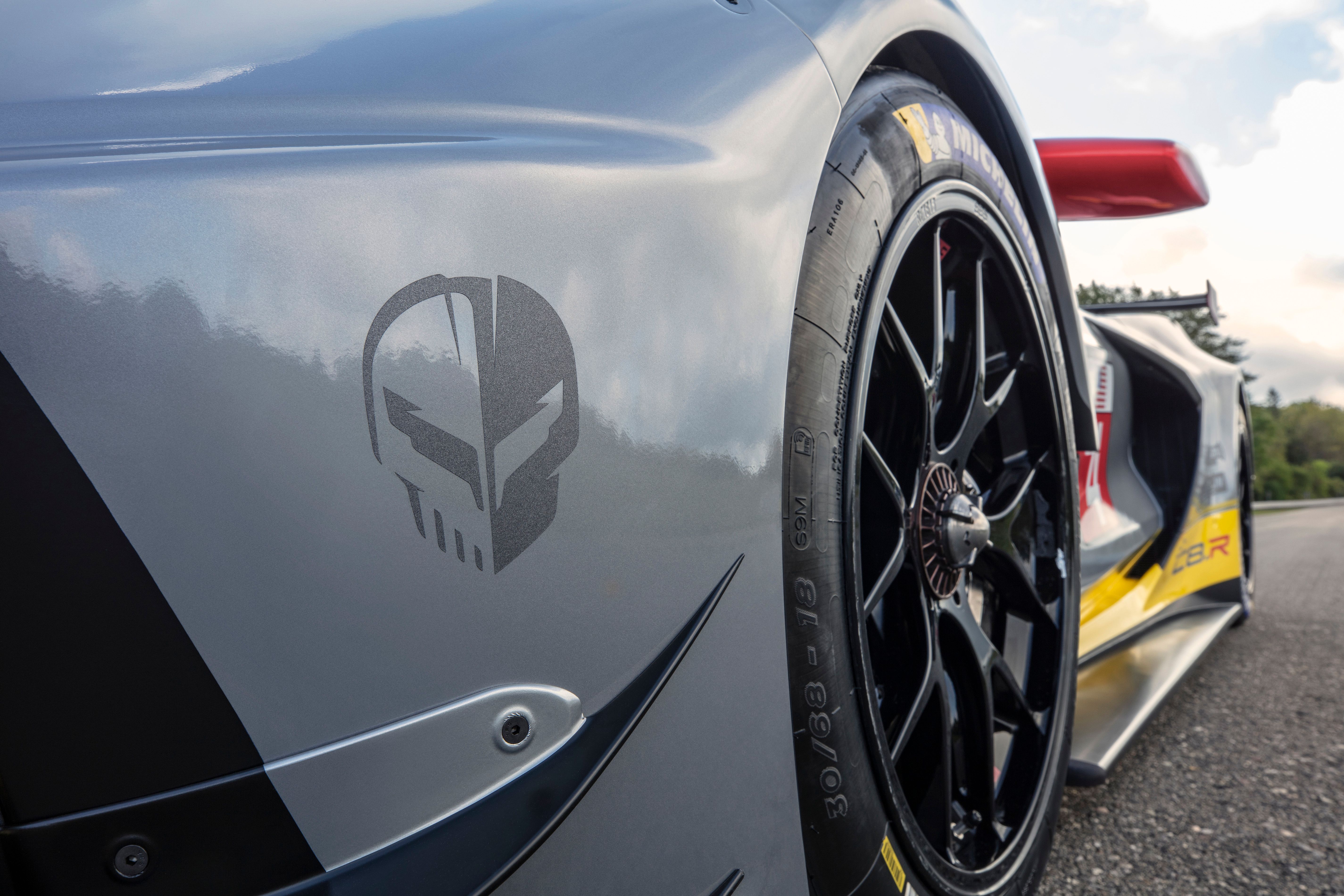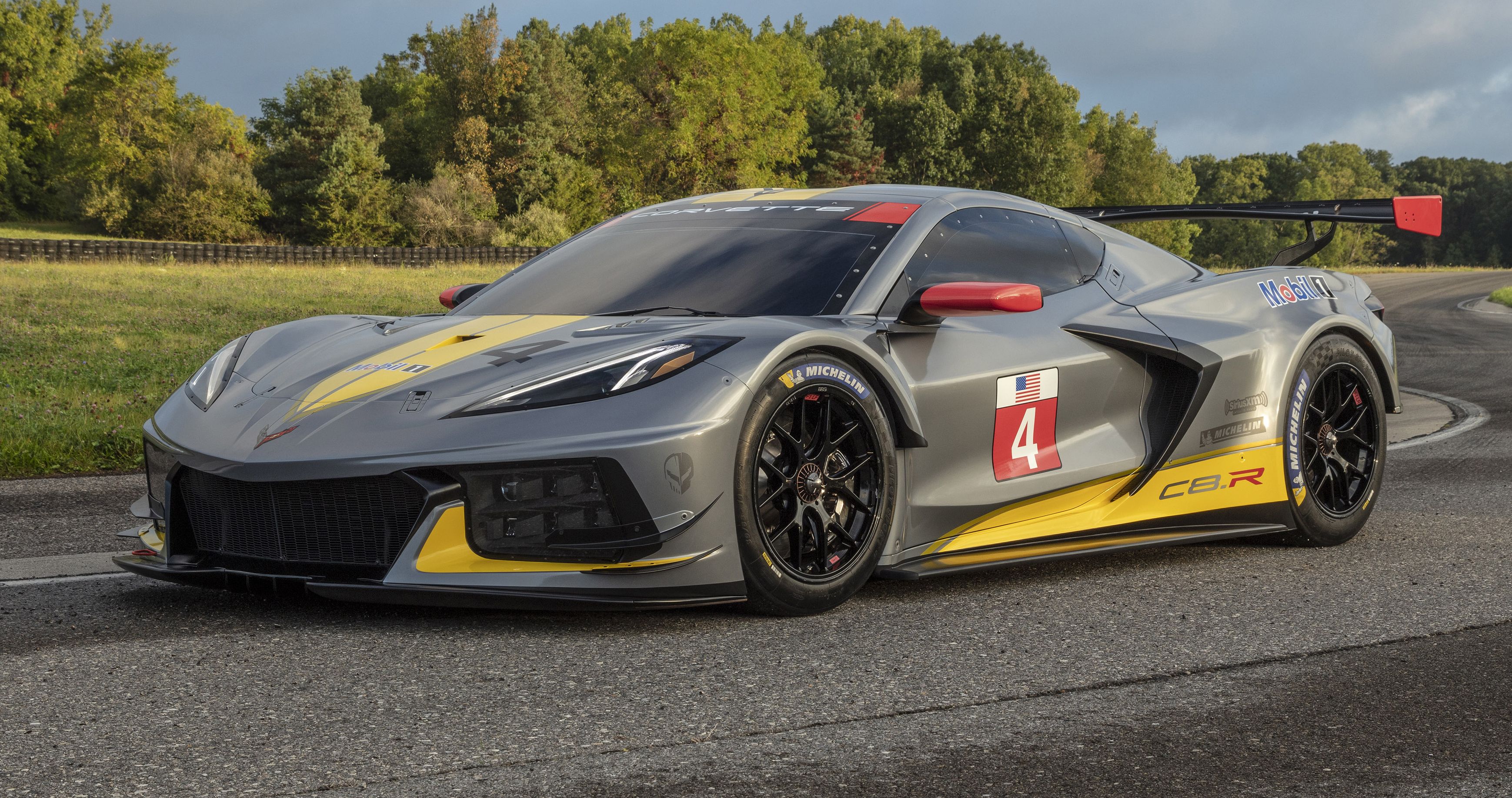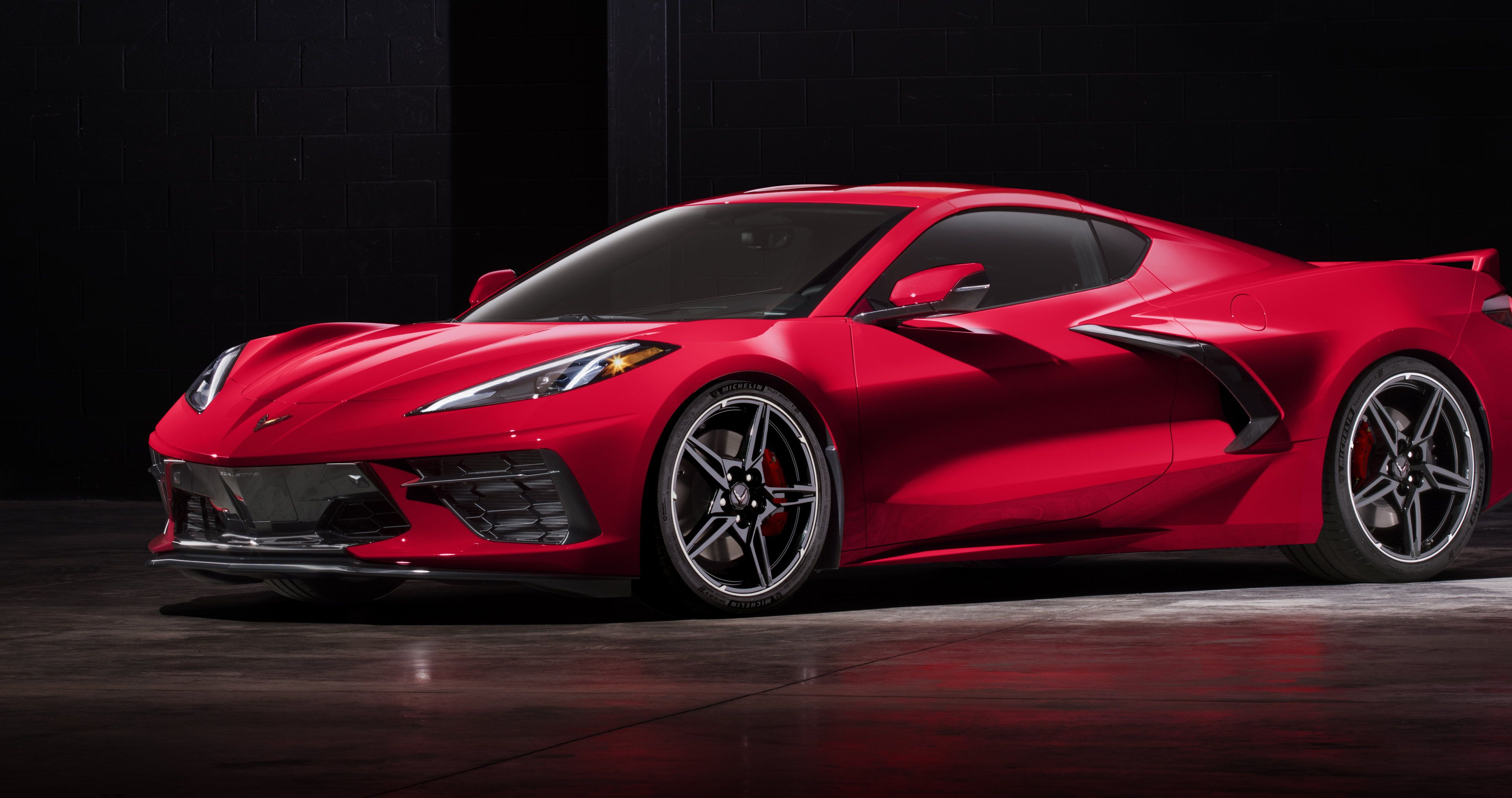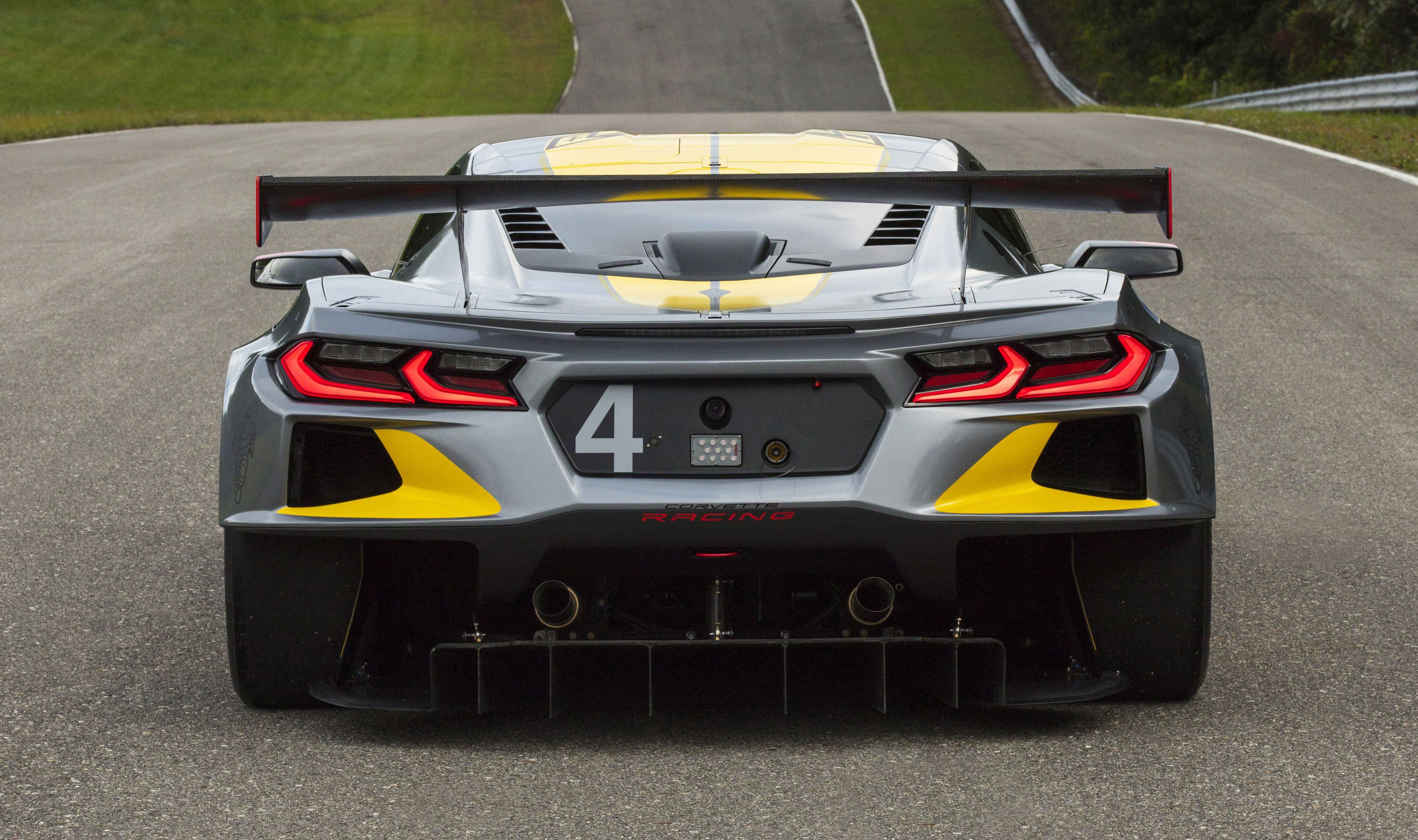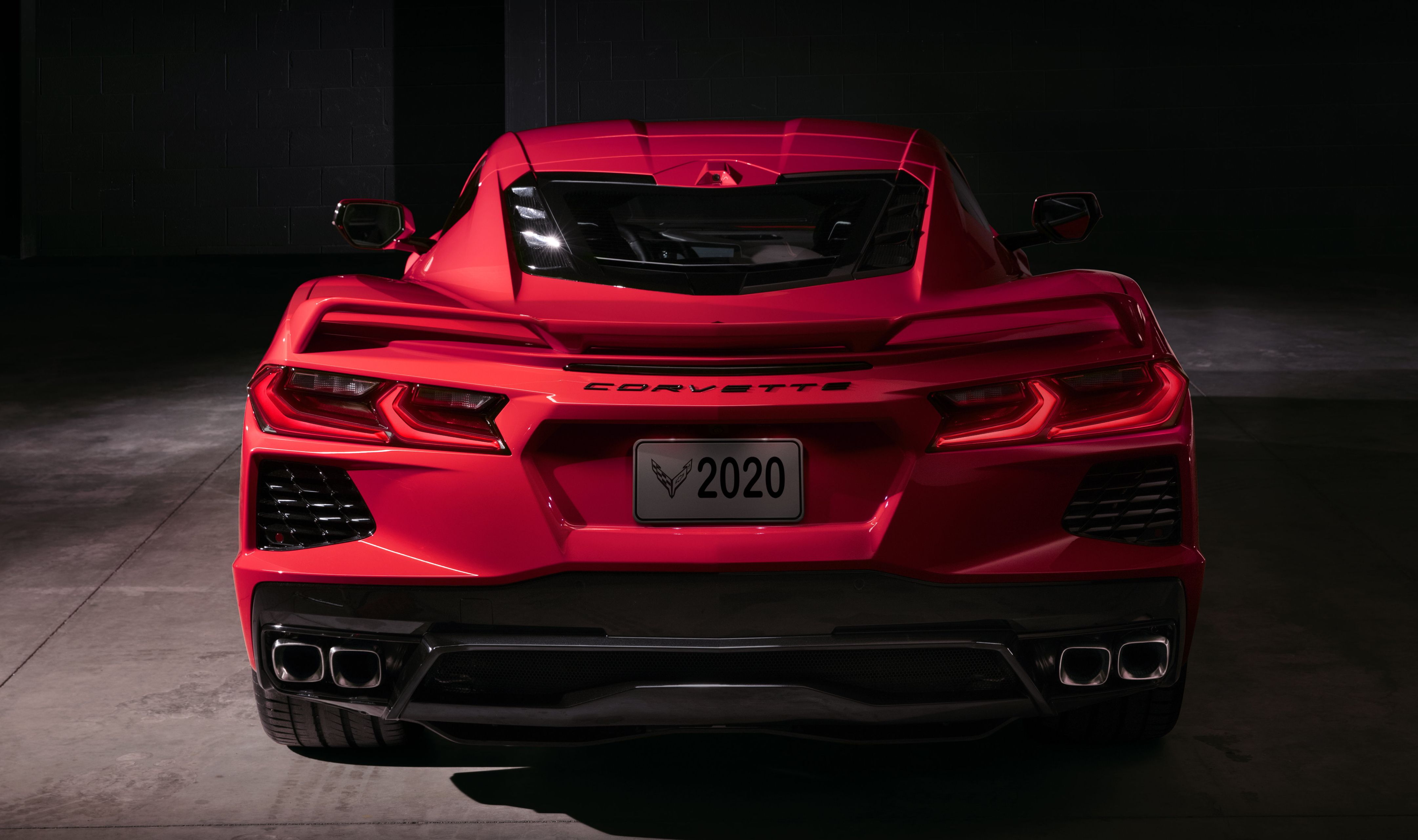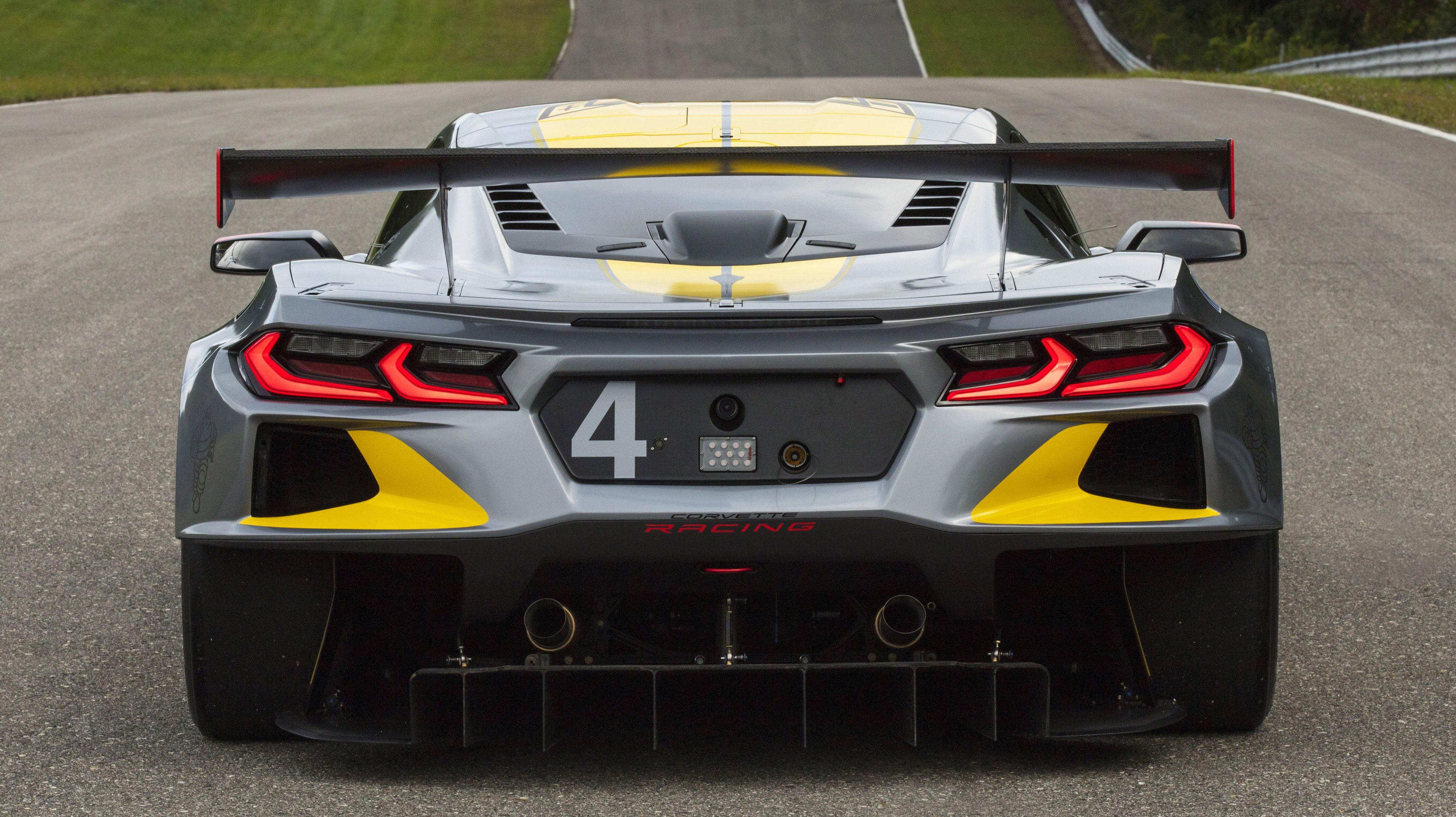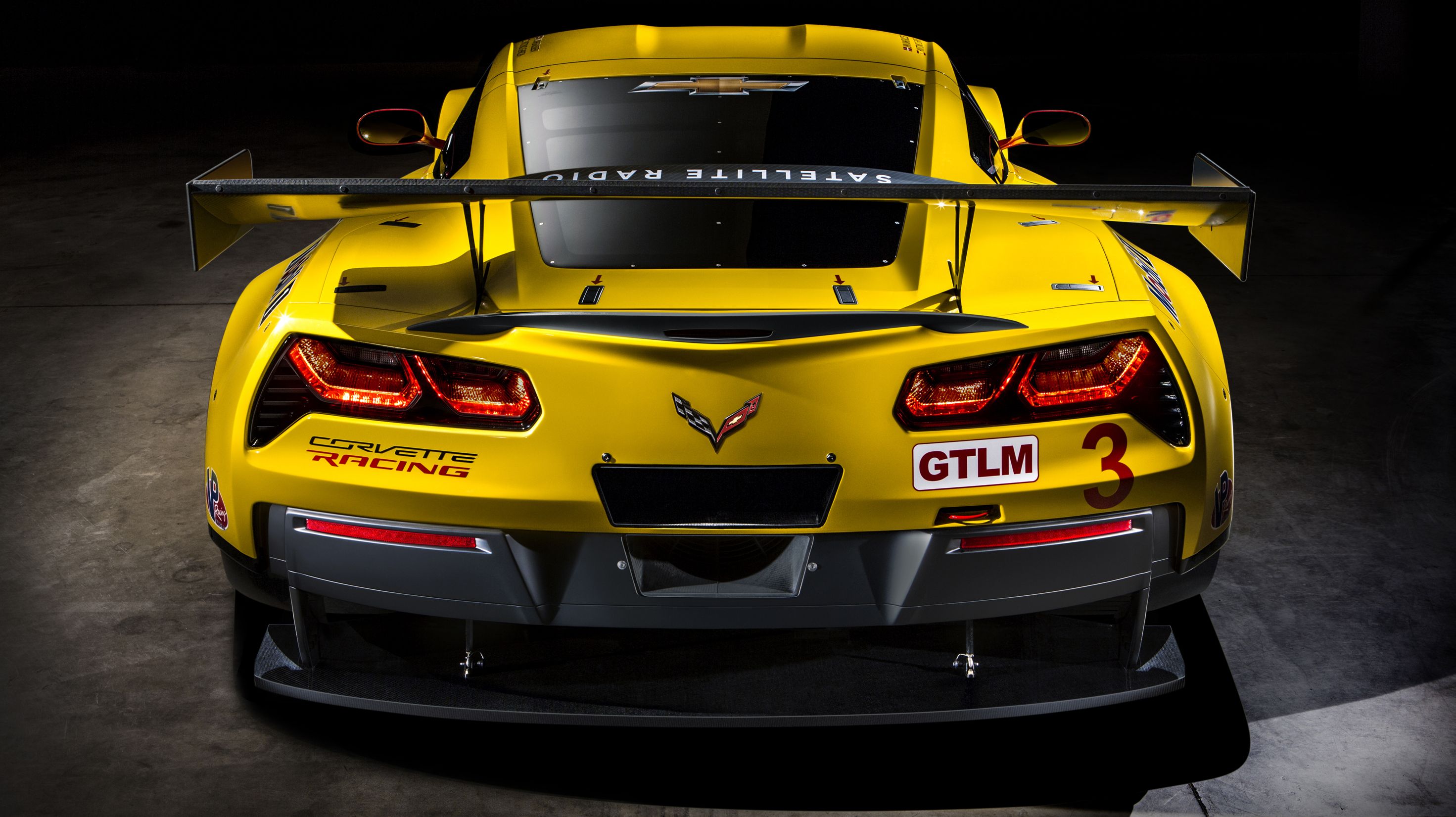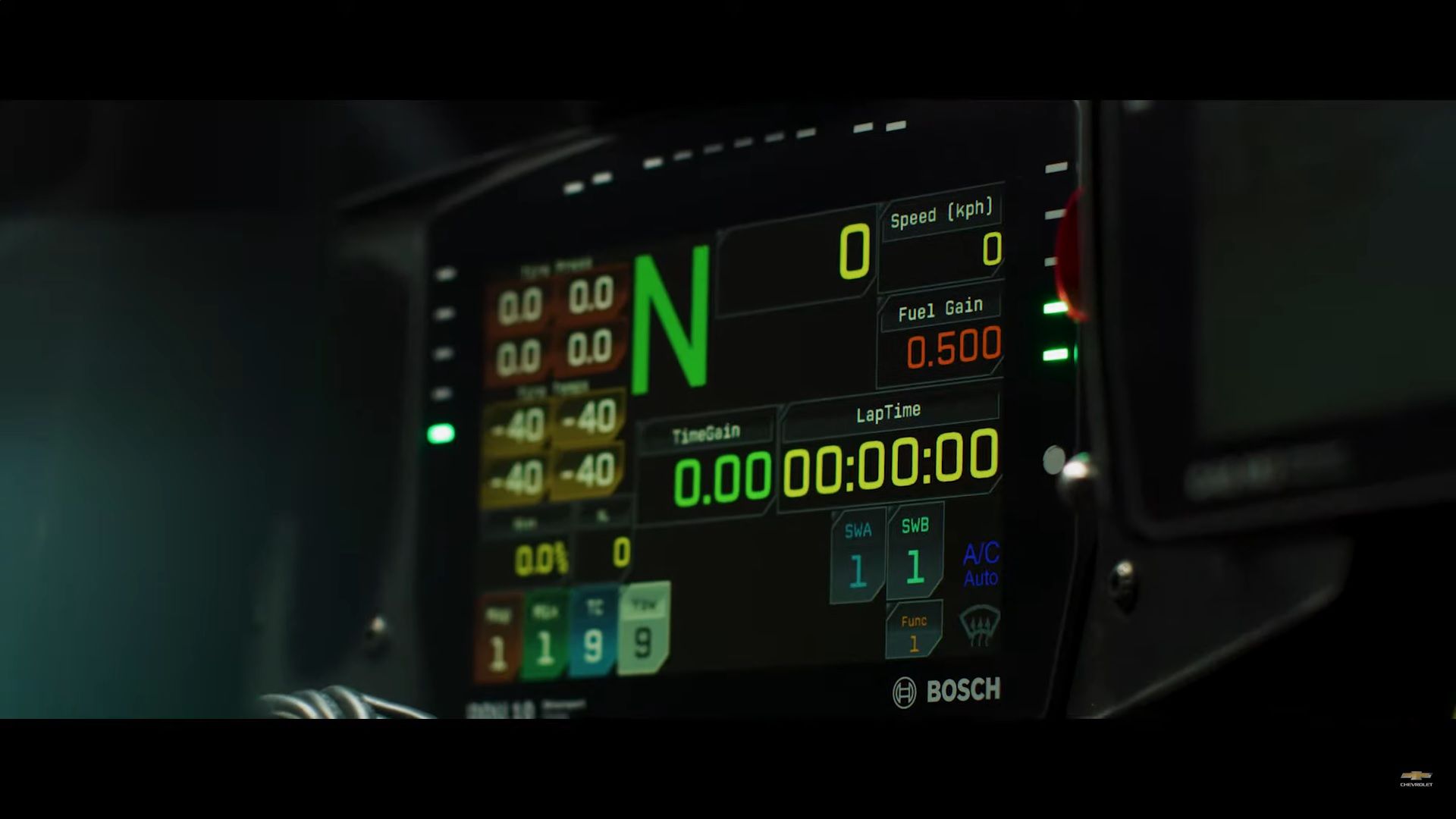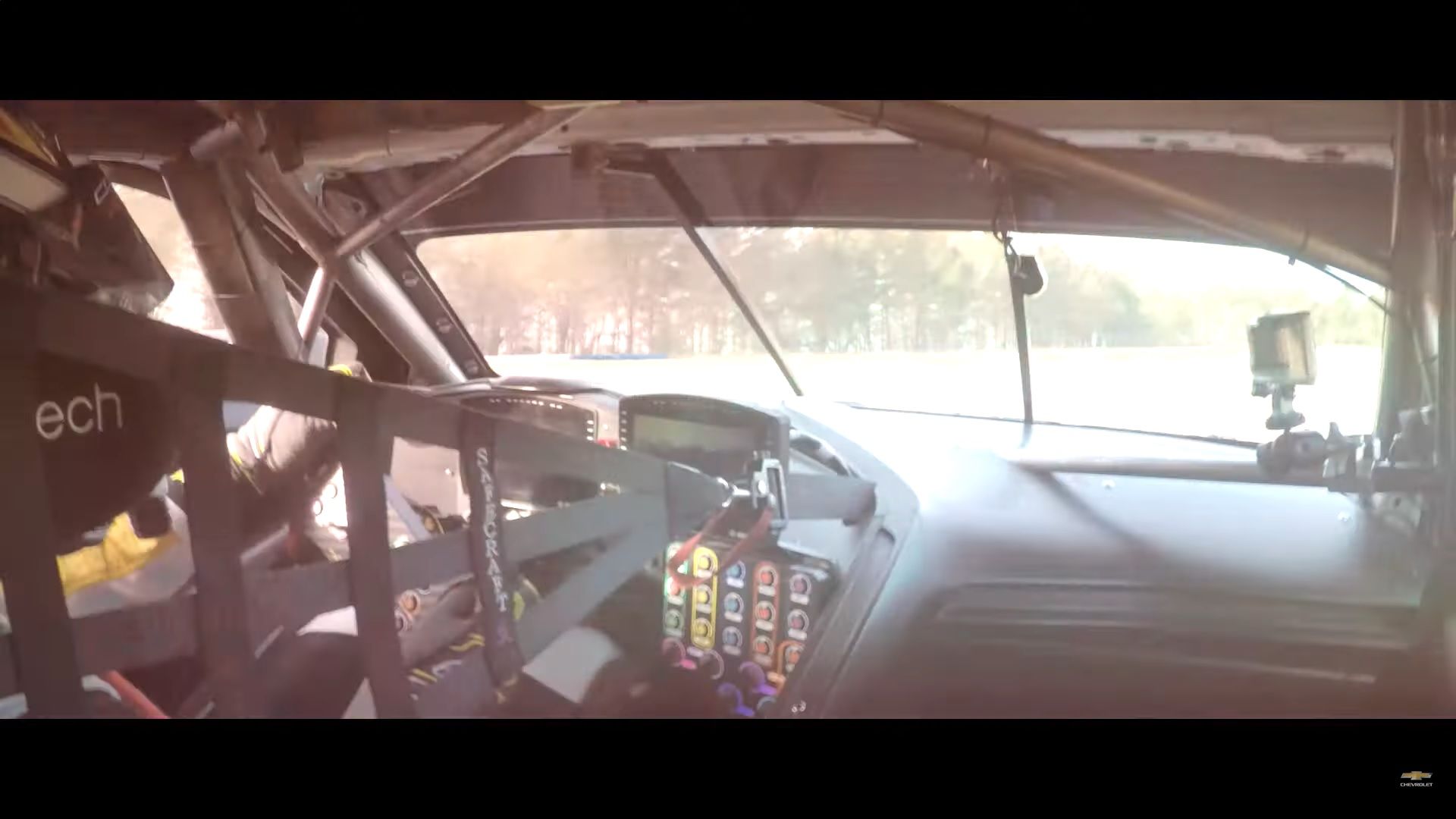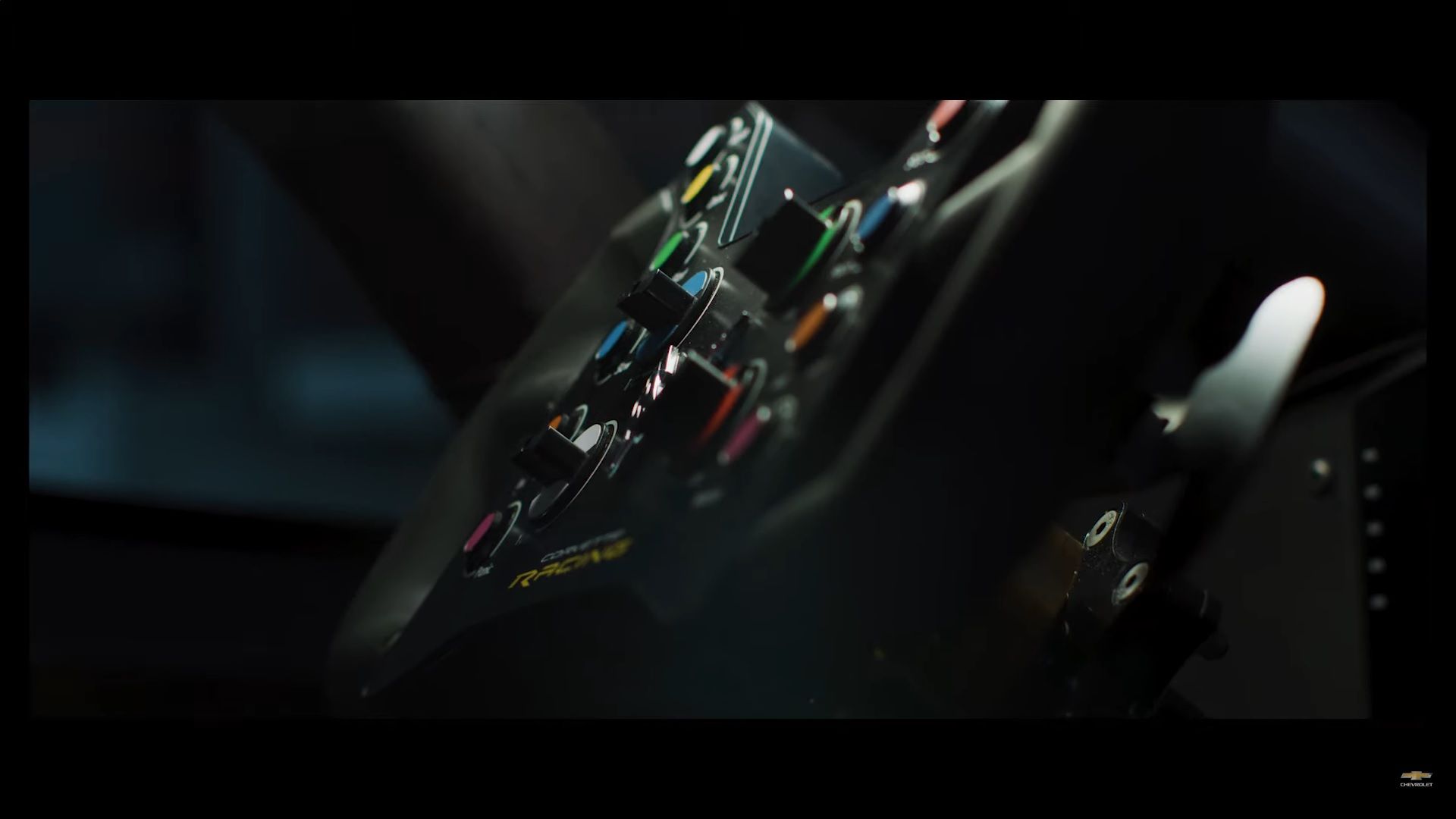Corvette Racing, the oldest continuous program in top-level sports car racing of the modern era, unveiled its next chapter back in October when GM unexpectedly took the wraps off the C8.R, the GTE-spec race car based on the eighth-generation Corvette. It comes with a menacing body kit, a huge wing hanging over the back, and a flat-plane crank, 500 horsepower, 5.5-liter V-8 in the middle. A pair will race in the IMSA Weathertech SportsCar Championship and at Le Mans next year, so keep your eyes and ears peeled.
It was back in 1999 at the Rolex 24 Hours of Daytona that a factory-backed racing Corvette first took to the track in an official practice session for a race. After decades of racing in privateer hands, barring some semi-factory-backed efforts that were ultimately canned due to GM's ban on motorsport-related activities, the Corvette finally competed with backing from Detroit. 21 years later, Corvette Racing is still taking on the world's best on America's road courses and beyond and its latest weapon is unarguably the craziest yet.
2020 Chevrolet Corvette C8.R
- Make: Array
- Model: 2020 Chevrolet Corvette C8.R
- [do not use] Vehicle Model: Array
Drivetrain
While the suspension mounts have been left untouched, the suspension layout itself is entirely different. If the road-going C8 packs a passive spring and damper setup, the C8.R sports a short/long-arm double-A-arm setup with upper and lower control arms and adjustable coil-over shocks.
The brakes are new, too, as Corvette contracted Alcon to supply the brakes. With 15.35-inch, six-piston, monoblock rotors in the front and 14-inch discs in the back, the C8.R's brakes are two inches bigger in the front and 0.2 inches bigger in the rear than those fitted to the stock C8. "This car has more rear weight bias , and you run more rear brake than on the C7 so they have grown in size, and we have a much bigger rotor in the front," said Johnson. Corvette Racing partnered with AP Racing for the brakes on the C7.R.
The sizeable air vents are telling of just how much air the C8.R requires to cool down but the latest Corvette Racing car doesn't just employ passive cooling to keep its components from overheating. While the C7.R, with its front-mid-engine layout, featured a longer prop shaft that linked it to the transaxle, the C8.R's rear section is jampacked with parts that have to be kept cool.
same area, and then things that want to be cool, like the compressors and alternators, are in the same area, so where before you could rely on passive cooling, there’s now heat shielding and active cooling going on," Johnson underlined. Whether or not the issue of keeping temperatures in check has been dealt with appropriately is unknown before the car is actually raced in anger.
You may remember how Porsche's first mid-engined 911 RSR went up in flames during the Silverstone Six Hours in 2017, its maiden FIA WEC outing. Corvette would like to avoid that with its very own first mid-engined race car.
While changes to the aero, the packing inside, and the cooling setup are all relevant, the heart of the C8.R is unarguably the main talking point as it's telling of what the Corvette C8 Z06 will most likely pack behind the driver's head.
Given that the C8.R has barely been homologated ahead of its racing debut in the 2020 24 Hours of Daytona, we don't know that much about the engine but we do know two things: 1) it is a flat-plane crank unit and 2) Chevy must produce at least 300 road-going Corvettes powered by this engine in order to be allowed to run the race car. So, in short, a flat-plane crank V-8 will soon be available confirming the rumors. Having said that, it will be smaller in capacity than the 5.5-liter mill of the race car, apparently. In the C8.R, this engine puts out 500 ponies and 480 pound-feet of torque.
"A flat-plane crank doesn’t have counter weighting on the crankshaft, that gives you better response, and those are the primary reasons why you would do a flat-plane crank,’ said Ed Piatek, the C8's Chief Engineer. What you do get as a by-product with a flat-plane crank engine, in place of counter weighting, is increased lateral vibrations in comparison to a pushrod engine.
"We have seen things in testing that we have had to address due to the vibration, but
nothing fundamental," Johnson underlined although admitting that "things were coming loose that we never thought about on the C7." Some of the vibrations, especially from the gearbox, have been damped via the beefed-up shorter prop shaft.
Talking about the gearbox, it's a six-speed sequential-manual that's lighter than the C7.R's transmission. We don't know how fast the C8.R sprints from naught to 60 but we know the basic Stingray with the Z51 package and the eight-speed, dual-clutch automatic can do the deed in three seconds and it tips the scales at 3,587 pounds according to MotorTrend.
During the three-day Roar Before the Daytona 24 Hour test, a mandatory event that every team and car contesting the Rolex 24 Hours of Daytona must partake in, Corvette Racing chalked up 341 laps of the 2.5-mile roval across the two cars. That's eight laps fewer than the two RLL-prepared BMW M8s managed and 17 less than the two 911 RSR completed but Corvette fans shan't be worried. “We’ve been very pleased with our time here simply because we haven’t had any durability issues," said Doug Fehan, Corvette Racing Program Manager to Sportscar365.com.
The mechanics and the drivers have to now get used to the new car which, in itself, is a challenge but one that Tommy Milner relishes. "Some boredom gets built in because you end up at a setup that you don’t really stray from too much," Milner pointed out before adding that "there’s a whole world of options that we can try to make better," which, in turn, is "fun for the engineers and it’s fun for us."
Spaniard Antonio Garcia, who's been a part of Corvette Racing's driver roster was also quick to praise the new car, although admitting there're still lots of things to work on to extract the best out of it. "I can admit what everyone has said – that the car is amazing to drive. There hasn’t been a lot of time to get used to the car, but you can see the potential. Also, you can feel how much a difference seven years makes from when the C7.R first arrived. The car is very agile, and you can fight it harder and push pretty hard," he said quoted by GM Authority.
Chevrolet Corvette C8.R specifications
|
Engine |
5.5-liter, flat-plane crank, 32-valve, naturally aspirated V8 |
|---|---|
|
Output |
500 horsepower and 480 pound-feet of torque at 7,400 rpm |
|
Transmission |
Six-speed sequential-manual transmission |
|
Suspension |
Short/long arm, double-A-arm setup, lower control arms, and adjustable coil-over shock absorbers |
|
Steering |
Rack-and-pinion |
|
Brakes |
Steel disc brakes all around, no ABS, 15.35-inch monoblock rotors in the front and 14-inch rotors, six-piston calipers at both ends |
|
Weight |
2,777 pounds (minimum mandated weight, 2,733 pounds without any ballast) |
Interior
The eighth-generation Corvette caused a stir for many reasons and, while nowhere near the top of the list, its cabin was mentioned more than a few times for its driver-focused layout that resembles an airplane's cockpit due to the height and shape of the center console and the layout of the buttons. There's none of that in the C8.R, of course, but the large array of buttons and screens makes it all look foreign to someone who's never sat in a race car before.
While the screen was kept, many of the buttons on the center console below it were disposed of as drivers complained some were hard to reach during the night and, as a result, most switchgear is on the wheel. There are sixteen rotating knobs on the wheel, all backlight in different colors to distinguish them inside the nearly pitch-black cockpit at night.
The advanced safety structure of the cockpit including the high sills and the integrated roll cage, as well as the hatch in the roof for driver extraction, has been largely carried over in terms of design principles from the C7.R although the layout is a bit different given the cabin of the C8 is different in shape and size. The racing bucket seat is fixed in place so each driver adjusts the steering column when he jumps in as well as the pedal box to suit his needs, not the seat.
Exterior Design and History
If you think the Corvette C8 in its neat and tidy street-wise attire is menacing, just wait until you see this dash around the Daytona roval for 24 hours straight.
Built, as always, by Pratt & Miller, the C8.R was unveiled in early October of 2018 at the Kennedy Space Center during the launch event of the C8 Convertible when Chevy pulled a bit of a sneaky on everybody and brought the silver No. 4 C8.R to the stage. In a first-ever move, Corvette Racing will enter the 2020 IMSA Weathertech SportsCar Championship with one silver car and one yellow car. Well, to be precise, the silver no. 4 car will feature a pair of yellow stripes as well as yellow accents across the rocker panels and the nose while the predominantly yellow No. 3 car will sport some silver paint splashed in the areas where the silver car is yellow.
GM was kind enough to explain to us the reason behind the decision to no longer run a pair of Velocity Yellow cars, which has been the norm for almost two decades (in '99, the two C5.Rs were sponsored by Goodwrench and were painted in grey, silver, and black but, from '00 onwards, all factory Vettes raced in yellow with very few exceptions).
The latter was a gorgeous one-off penned by GM design legend Bill Mitchell who actually paid out of his own pocket to see the car race in the very late '50s and early '60s. Originally, the Sting Ray Racer was painted in red but, towards the end of its racing career, it was repainted in silver at Mitchell's request as the famous designer was a huge fan of the 'Silver Arrows', the German Grand Prix cars built by Auto Union and Mercedes-Benz in the '30s. The silver on the No. 4 Corvette C8.R is, however, noticeably darker than on the Sting Ray Racer or the Aerovette - on which you can read more here. The tint rather resembles the one seen on the 'Redline' C7.R entered by Corvette Racing in its one-off Asian outing back in 2018.
|
|
ids=879865,879866 |
no_overlay=false |
before_label=2020 Chevrolet Corvette C8.R |
after_label=2020 Chevrolet Corvette C8> |
Away from the livery, the entire car is all-new from end to end as it's based on the C8, the first production Corvette whose engine is behind the head of the driver, not immediately next to the windscreen as it's been the case in the past. the head of the driver, not immediately next to the windscreen as it's been the case in the past. }} The C8 was greenlit by the top brass in Detroit six years ago and the development of the racing car you see here became simultaneously, the result being that the car impressed straight out of the box, completing a number of shake-down runs as well as a few private tests and the three-day Roar Before The Daytona 24 test without any major dramas to report. It's obviously a whole new world for Corvette Racing's crew and its drivers as everything is in a different place compared to the C7.R, a car that'd been around since 2014 and was a known quantity for the team.
In the front, the Le Mans-ready C8 features a heavily revised fascia. It's still as pointy as ever but the side vents have been deleted and their place was taken by additional multi-beam light clusters for night-time driving which occurs in round-the-clock events such as the 24 Hours of Daytona, the 12 Hours of Sebring, and, obviously, the 24 Hours of Le Mans. In the middle of the fascia, there's a big inlet guarded by a vertical mesh grille that hides a big radiator placed in what would otherwise be the frunk in the road car.
The extra lights in the lower part of the nose are placed in a recessed position with yellow accents around the edges and a pair of dive planes positioned outboard on the corners of the nose. You may see these dive planes disappear completely when the car arrives in France for the 24 Hours of Le Mans as the low-downforce nature of the temporary road course that dashes through the La Sarthe valley makes mincemeat of any car that's not fast down the many straights.
The pointy bodywork ends with a black lip that extends beyond the tip of the car's equally pointy nose. This lip goes around the nose of the C8.R and, on some racing cars, features additional, vertically mounted, dive planes but not on the C8.R. The lip extends further forward on either side of the main inlet.
Viewed from the side, the C8.R looks like a beast which is no surprise since that's precisely what it is. What's impressive is the way the fender flares cut after barely circling the top of the wheels fore and aft, the bodywork immediately receding inwards. All modern-day GT cars feature a similar flare design that comes out of necessity - necessity to manage airflow from the brakes and to clear away rubber debris that break away from the tire during the car's on-track activities.
To further cool the front brakes, a whole new air vent was carved into the front fender flares that attempts to mimic the semi-boomerang shape of the forward-facing rear inlet, a key design feature on the production model as well. The difference here is that the inlet is actually bigger on the race car, its lower edge going below the line of the humongous ridge that runs across the doors and which, in the case of the road-going C8, meets with the lower extremity of the side vents.
|
|
ids=8798675,879868 |
no_overlay=false |
before_label=2020 Chevrolet Corvette C8.R |
after_label=2020 Chevrolet Corvette C8> |
So, understandably, the C8.R features bigger vents all around for improved cooling but there are no openings aft of the side windows to feed more air into the engine bay and nor is there a roof scoop. Rocker panel extensions do exist, however, in line with the lip in the front and the far-reaching multi-piece diffuser in the back.
The exterior rear-view mirrors and the windows are different too. The former are narrower and wider than on the production model and with a different support arm while the windows can't be rolled down although there is a small section of the side windows that can be slid open.
Fat tires, a full-width rear wing and a wide diffuser with horizontal side elements dominate the rear end of the C8.R. With the rear center panel effectively ending immediately below the two side vents in the back, on-lookers get a good look at the fat Michelin tires (the wheels are four inches wider in the front and two inches wider in the back). The taillights have remained unchanged and the engineers have even kept the tiny spoiler incorporated in the rear deck section.
The fixed rear wing doesn't rise too high above (you're not allowed to run with a wing that's taller than the highest point of the roof) but, with long, black arms it extends back beyond the edge of the rear deck quite a bit, its end plates hanging marginally beyond the edge of the rear diffuser. Talking about the diffuser, it really is big. It extends beyond the edge of the rear tires and features no less than six vertical elements. The twin-pipe exhaust exits atop the diffuser while the area of the numberplate hosts the rain light and the connecting point for the air hose that powers the air jacks that lift the car up during a pit stop.
|
|
ids=879869,879870 |
no_overlay=false |
before_label=2020 Chevrolet Corvette C8.R |
after_label=2018 Chevrolet Corvette C7.R> |
The diffuser is a lot bigger than on the C7.R that debuted with a flat, horizontal diffuser. Changes made to the GTE/GTLM rules back in 2016 further hindered the C7.R as they allowed manufacturers to fit bigger diffusers and bigger splitters to their cars which Pratt & Miller couldn't do (Aston Martin, for instance, responded by introducing yet another iteration of its first-gen Vantage-based racer that actually won at Le Mans ahead of Corvette in 2017) as it would've required extensive sub-frame redesigns that Corvette Racing vetoed since it was already cooking the C8.R by then.
With these rules in hand, the engineers and aerodynamicists were able to maximize the aero potential of the C8 in line with the FIA's free volumes for each aerodynamic element, according to Racecar Engineering. "Everyone pushes the wing as far back and high up as they can and then you section the rear fascia at the maximum line to help rear downforce and extraction," said Ben Johnson, Vehicle Integration Engineer at Corvette Racing. GM commissioned XTrac to build a bespoke and very compact transaxle for the C8 in order to make way for a bigger diffuser (the C8.R's aero package produces 10% more downforce than the C7.R's).
Unlike Porsche's latest, mid-engined, 911 GT3 RSR, the C8.R actually keeps the glassed cover over the engine bay but the driver can't see much out the back since the wing is in the way and there's a rear-facing vent at the bottom of the rear window as well as vents on both sides. The vent at the bottom of the rear window helps to clear air off the rear wing and, thus, "clean up the boundary layer and make the wing more efficient, while getting some good ram high pressure flow for the intake," added Johnson.
Chevrolet Corvette C8.R exterior dimensions
|
Wheelbase |
107.2 in |
|---|---|
|
Length |
182.3 in |
|
Width |
80.7 in |
|
Height |
45.2 in |
Pricing
The GTE/GTLM category that offers the framework of rules followed by Pratt & Miller in the construction of the C8.R is at the top of the GT racing pyramid right now. That is to say, the most expensive road-derived GT racers out there in 2020 are racing in the GTE class.
If Porsche's latest, 991-based 911 GT3.R costs little over half a million, the previous mid-engined GTE-spec 911 RSR was said to come with a sticker price in excess of $1.1 million apiece. Prices have gone up recently in all areas of motorsport, as Porsche's previous GT3 race car only cost $450,000 back in 2016 when a Ferrari 488 GT3 was the most expensive option at $610,000.
Historically, there have been quite few teams ready to campaign the Corvette, the C6R being the most popular as a number of outfits bought chassis to race them in the FIA GT, the FFSA GT, the International GT Open, and other series. However, since the arrival of the GT2 (then renamed GTE) Corvette ZR1 back in '09, the number of privateers racing Corvettes has dwindled and, most recently, only Larbre Competition raced a Corvette privately in the FIA WEC and at Le Mans.
However, the tides may turn soon with outlets reporting there's renewed interest in the C8.R from a number of teams that could enter the car in the 2020-2021 season of the FIA WEC, the first to feature the Hypercar class at the top of the class structure in place of the current LMP1 category. MTEK, the team that ran the factory-backed BMW M8 GTE program in the FIA WEC in 2018 and 2019 is one of those teams actively evaluating a comeback to the series with a Corvette as is Ben Keating, the first person to buy and run a Ford GT privately having contested last year's 24 Hours of Le Mans in a Wynn's-sponsored car that won the GTE-Am class before being excluded over an arcane rule violation.
Competition
2019 Porsche 911 GT3 RSR
Porsche has been well aware for many years that having the engine hang in the back of its 911-derived race cars is no good thing. For starters, you end up with a car whose weight balance is always biased towards the rear and you have to manage that through the brakes and the tires. Then there's also the issue of packaging and cooling and, lastly, with the engine being in the back, you've got no room to fit a large enough diffuser to exploit the current rulebook to its limits.
That's why it's been three years since Porsche decided to move the engine of its 911 RSR in front of the rear axle while keeping the basic 911 shape untouched. The German automaker had previously campaigned a mid-engined 911 race car in the late '90s but that one, the 911 GT1, was a prototype-esque machine since it was a race car that then spawned a road-going version, not the other way around. To have the engine in the middle of the car, Porsche made use of its ingenuity when reading the rules that effectively allow you to place the engine anywhere within the designated engine bay. In the case of the GT3 RS, the engine extends as far forwards as the edge of the seats more or less since the car has no trunk in the back and no rear seats.
The 2017 911 RSR became one of the best GTE cars of the modern era winning both the FIA WEC super season crown in the GTE-Pro class and the IMSA Weathertech Sportscar Championship title in the GTLM category. It also won at Le Mans and took our collective breath away with its poignant exhaust note. The new iteration makes do without the glorious noise, due to the fact that the exhaust pipes now exit in front of the rear wheels and not out the back. In fact, 95% of the 2019 Porsche 911 GT3 RSR is all-new although stuff like the brake system, clutch, driver’s seat, and parts of the suspension have been grandfathered.
It is powered by a 4.2-liter version of 991.2's flat-six that produces 515 horsepower, all dispatched to the back wheels through a six-speed sequential transmission. The engine is the biggest to be fitted to a 911 ever. The car has already raced (and won) in the FIA WEC in the first rounds of the 2019-2020 season and will debut in North America later this month in the 24 Hours of Daytona.
Read our full review on the 2019 Porsche 911 GT3 RSR
2020 Ferrari 488 GTE Evo
The 488 GTE is already a familiar face in the paddock. introduced back in 2016, it could well remain Ferrari's battle horse through 2021 as Ferrari Competizioni GT technical director Ferdinando Cannizzo suggested it's more likely for a second Evo package to be introduced to further lengthen the car's homologation period than for Ferrari to develop an F8 Tributo-based GTE racer in the near future.
That's not necessarily something bad although it may see Ferrari lag behind as Aston Martin, Porsche, and Chevy get to grips and further develop their newer cars. However, the 488 GTE Is still potent enough having won the 24 Hours of Le Mans in 2019 and the FIA WEC GTE Pro title in 2017. Last year, it raced in Evo specification.
The Evo kit was homologated back in 2017 and it became available for teams running in GTE-Am in 2019. The Evo kit address many areas of the 488 GTE, being aimed at improving reliability, as well as aero performance optimization in the effort to make the car more friendly towards non-professional drivers. The engine, however, has not been changed and the 4.0-liter twin-turbocharged V-8 produces somewhere in the region of 490 horsepower and 479 pound-feet of torque.
At least one 488 GTE will race Stateside in 2020 thanks to Risi Competizione that's back in action in the IMSA Weathertech Sportscar Championship after also racing a couple of times in 2019 too. Giuseppe Risi's team, once a powerhouse operation entering two cars in the ALMS, is now only able to enter selected rounds of the championship due to limited funding but, when it does compete, it usually gives headaches to the established bunch of factory-backed teams.
Read our full review on the 2020 Ferrari 488 GTE Evo
Final Thoughts
The Corvette C8.R represents a whole different kettle of fish for Corvette Racing, a team used with an evolutionary approach over the past two decades. Now, however, the revolutionary C8 shook things up but Pratt & Miller seems to have risen to the occasion and have produced a world-class racing car that showed no major ails in its shake-down runs or its first official practice laps.
This doesn't mean the C8.R is faultless, no race car is and the men and women at Corvette Racing know that full well and won't be expecting too much out of its debut outing at the Rolex 24 this year but, come Le Mans, they'll know a bit better what they're working with. In short, the C8.R is unlikely to win straight out of the box but expect it to be a contender in the GTE-Pro class in the FIA WEC and the GTLM class in IMSA respectively pretty soon. Sooner, at least, than the three-year timeline once outlined by Jaguar team boss Tom Walkinshaw who used to say that you need three years to develop a car to the point that it can tackle Le Mans with winning odds. With millions to spend and all the cutting-edge tech at its disposal, the C8.R is bound to strike gold soon, very soon.

